An Akita odyssey
Located in the far north of Japan's largest island of Honshu - Akita is a remote and wintry prefecture known for its heavy snowfall, proud and distinct local culture and spectacular festivals in summer and winter. Part of a larger area formed from the union of the two ancient provinces of Dewa and Mutsu, it forms a roughly rectangular shape, broken only by the Oga Peninsula jutting prominently into the Japan Sea.
Having visited just once briefly before - I was delighted to return recently for a 4-day group tour of its many scenic and cultural highlights.
Day 1
My first taste of Akita's famous winter conditions came even before I had landed, with a gathering snowstorm above Akita Airport necessitating a few anxious circlings before we made it to ground level. In no time at all however I had met my group, boarded a minibus and was zipping past snow covered fields on my way to the small historic town of Masuda.
Now incorporated into Yokote City, Masuda sits within a bowl-shaped landscape known for receiving one of the heaviest annual snowfalls in all of Japan. Despite this challenging environment, the town flourished from the end of the 17th to the early 20th centuries, in large part due to its position at the confluence of the Minase and Naruse rivers, and at the crossroads of two major highways. By the end of the 19th century, Masuda had become one of the prefecture's main producers of silk and tobacco, and boomed once again when the mineral rush of the early 1900s drew thousands of workers to the nearby Yoshino area.
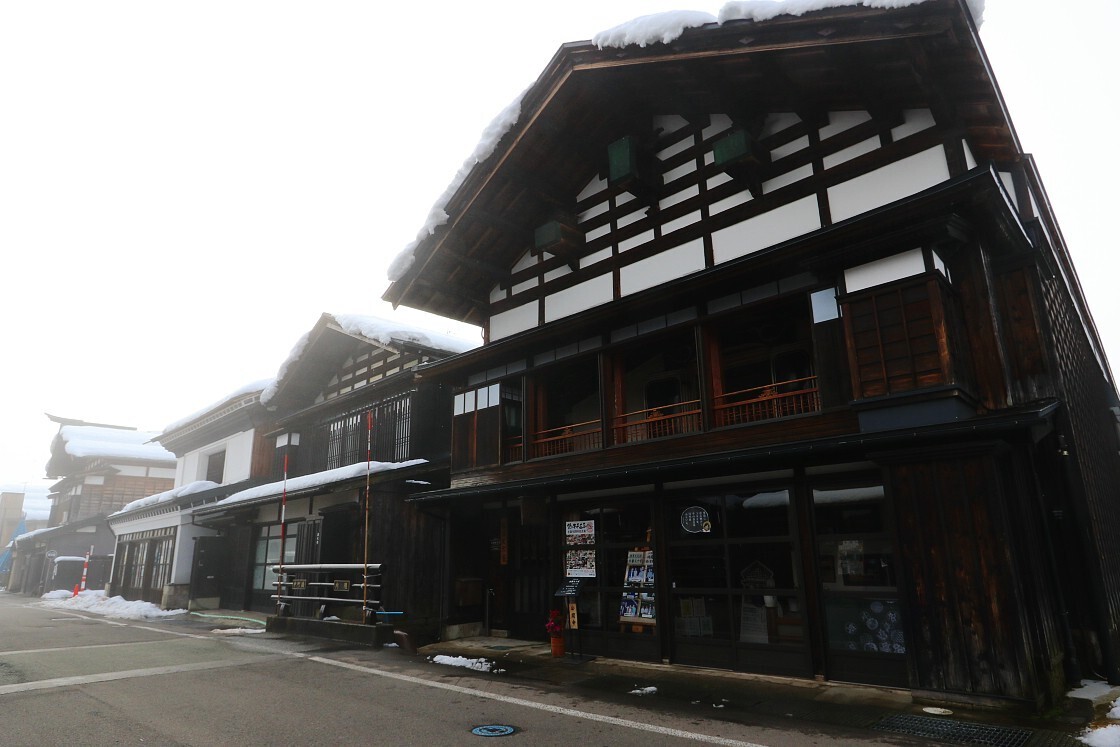
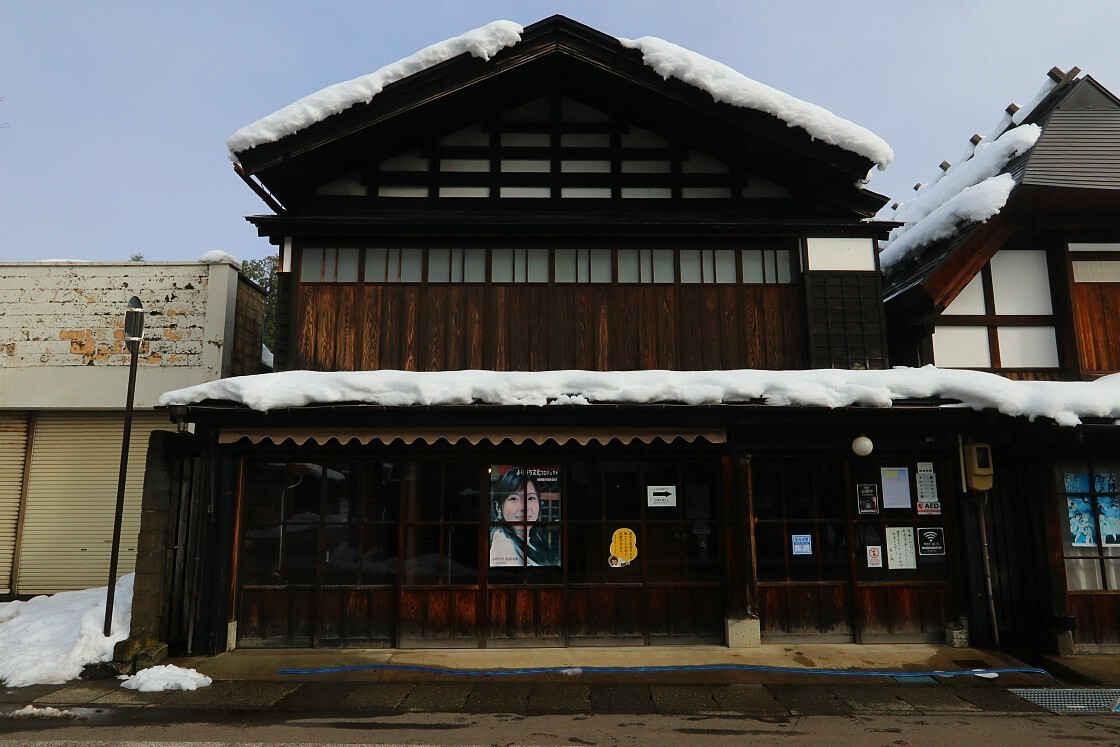
The combination of tough conditions and prosperity bred a local culture that was practical yet community-spirited, in which local people gathered in the town to fix roofs and clear snow in wintertime, then flocked to the fields in summer to assist in the harvest. Today, visitors can still get a vivid sense of the town at its peak from the distinctive former merchant houses lining the main street of Nakananokamachi-dori.
Although reminiscent of historical machiya townhouses, these distinguish themselves in the high, gabled roofs running perpendicular to the street - all the better to slough off heavy snow - and in their complete enclosure within a box-like shell known as a saya. Most important of all are the large and heavily built storehouses called uchigura, which unlike the usual separate storehouses found almost everywhere else in Japan, are located within the saya and part of the main building.
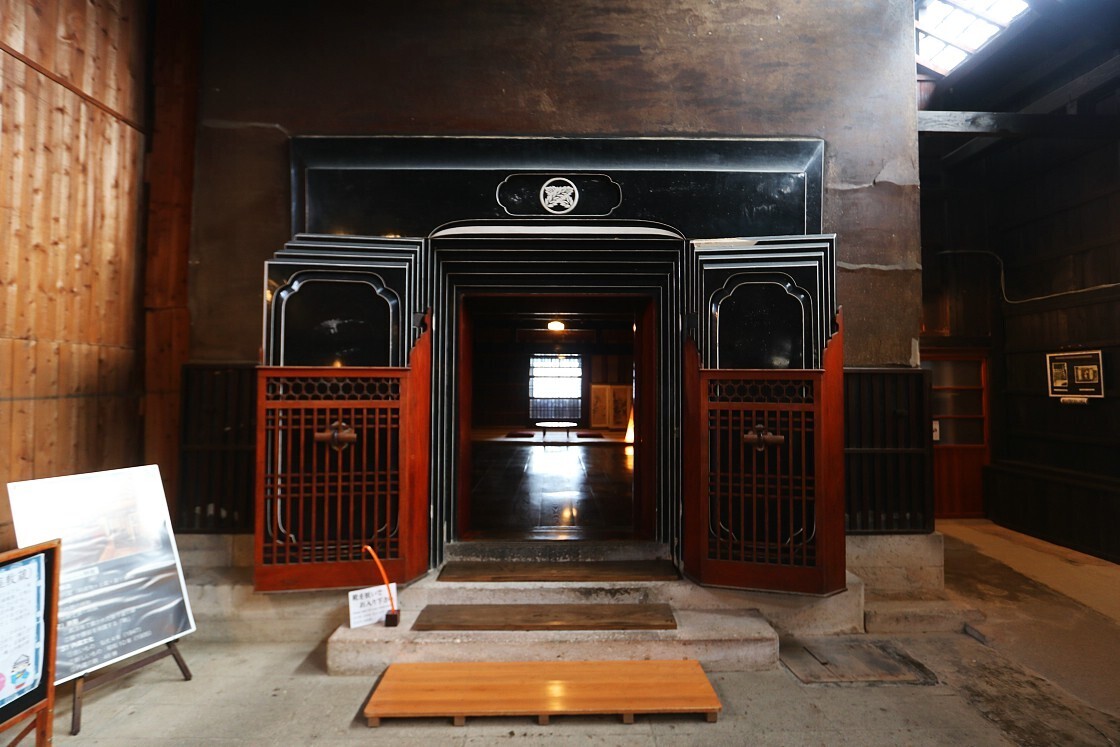

In Masuda's bustling and tightly knit community, uchigura tended to be the only part of a merchant residence to be fully-off limits to non-family members and ultimately took on something of a sacred aspect, with many families even adding a tatami matted space at the rear.
After our time in Masuda, it was time to get back on our bus for a quick 10 minute drive to our next stop. Founded in 1867 and still managed by the same family from its original premises, the Yamamo Miso and Soy Sauce Brewery would nonetheless turn out to be one of the most innovative and exciting attractions of my time in Akita.

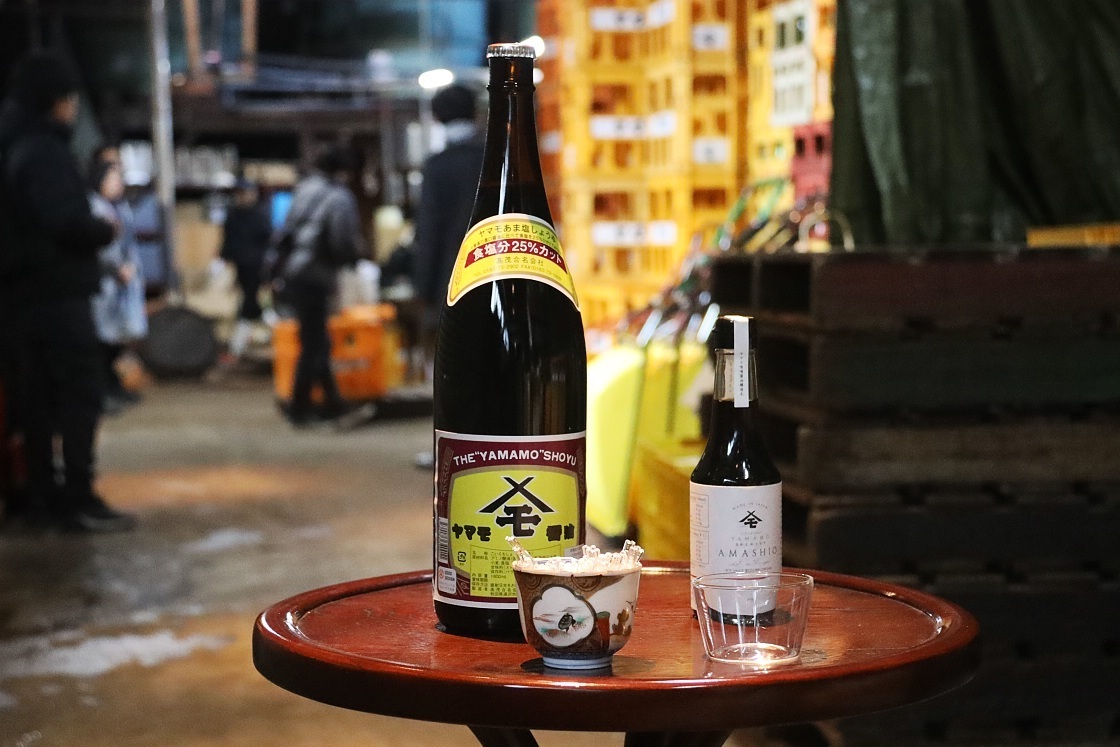
Faced with the same tough market conditions that have seen Japan's total number of artisanal breweries dwindle from around 3,000 to barely 800 in the past 20 years, Yamamo's current seventh-generation owner is leaning heavily into experimental products to compliment their more established line of traditional foodstuffs, while offering tourists the chance to experience both first hand.
Our time at the brewery began with a typical tour of the factory floor, learning some of the basics of miso and soy sauce production and even getting the chance to taste a handful of different bottlings while the buzz of everyday work continued around us. All very fascinating to be sure - but it was when we began to taste some of the brewery's more cutting edge creations that the tour began to really shine.
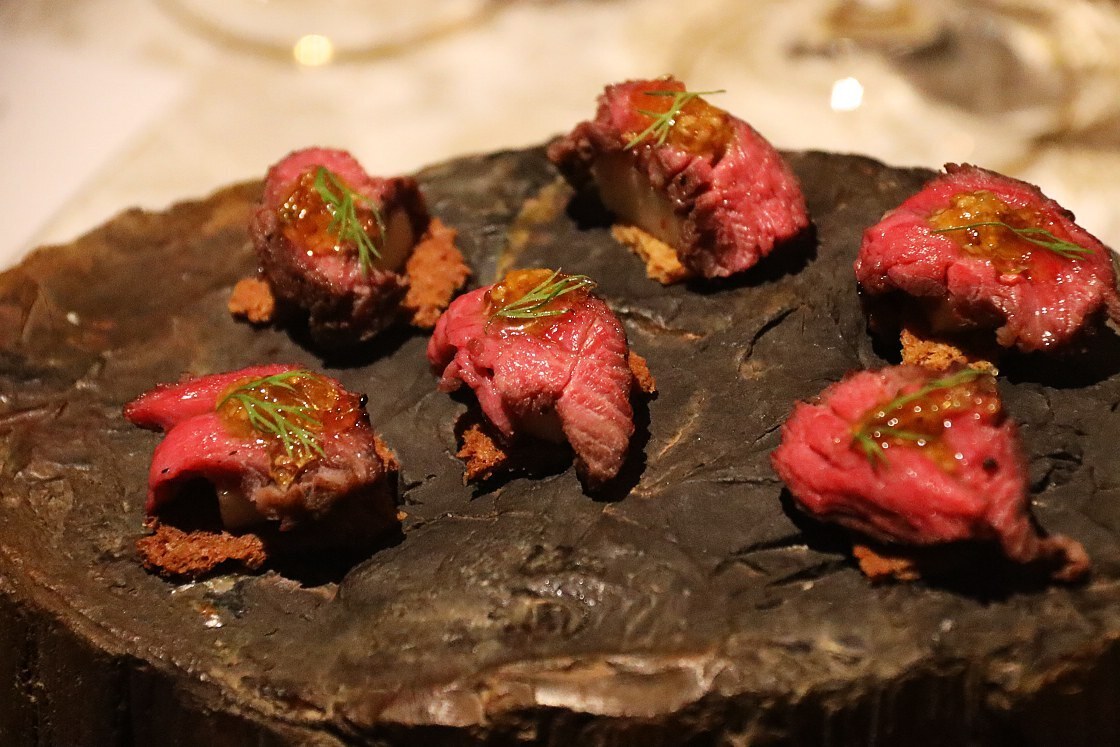
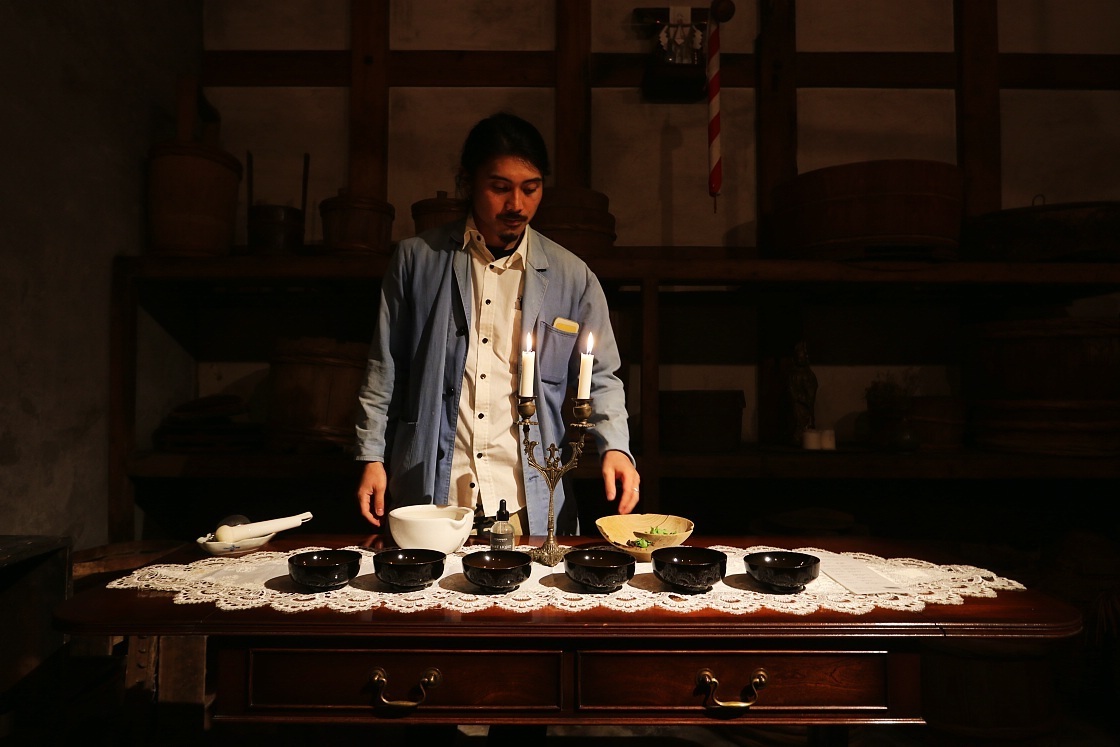
First up was a bite-sized chunk of bear meat paired with a white wine, both fermented using the same strain of yeast bred here in the brewery. This was quickly followed up with a bowl of cricket soup, seasoned with a dash of what the brewery describes as liquid yeast - and hopes to market directly to a clientele of elite international chefs. To me at least, the taste of the crickets themselves most resembled that of shell-on prawns, while the yeast added a nutty, savory depth.
From the factory floor, we were whisked to an upper floor tatami room for a selection of alcoholic and non-alcoholic cocktails, each with traditional yet surprising ingredients, from traces of pine to mirin, or rice vinegar.

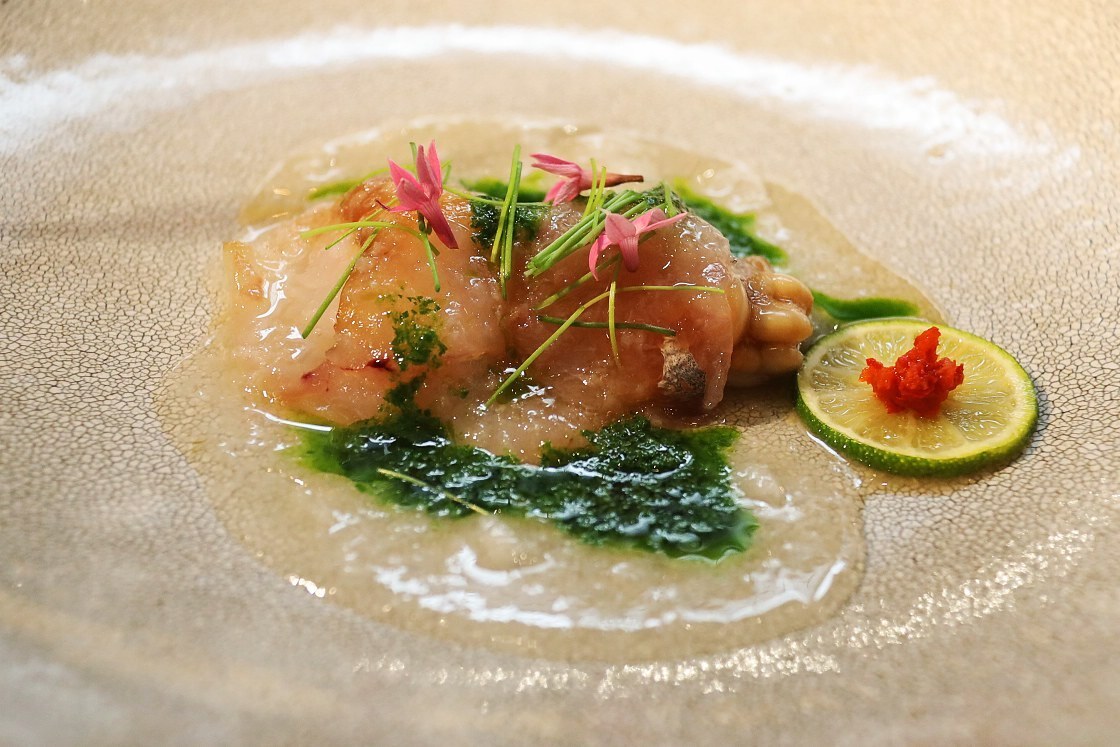
We finished our visit to the factory with a three-course lunch highlighting soy, miso and fermented ingredients with a light and endlessly inventive touch. As something of a newcomer to this kind of cuisine, I was amazed by the flavor of a fermented cut of lamb, while a dessert sauce of raspberry, chocolate, balsamic vinegar and fermented grapefruit was so complex that my brain simply couldn't cope.
After a genuinely fascinating meal, it was time to leave the brewery and make our way to the nearby Yokote Masuda Manga Museum - a one-of-a-kind museum dedicated to preserving the original drawings that are such an integral part of manga comic creation, yet all too often are discarded when projects reach completion. Today, the museum boasts a collection of some 450,000 pieces including art by many of the most celebrated mangaka in the business.
At the heart of the museum is its artfully designed permanent collection room, in which a gentle slope lined with works by 74 especially iconic artists winds around a tree with white paper leaves. Even with my own limited experience, I loved the feeling of nostalgia that came from picking out long-forgotten characters, and the minute details that emerged from the artists' own hands on close inspection.
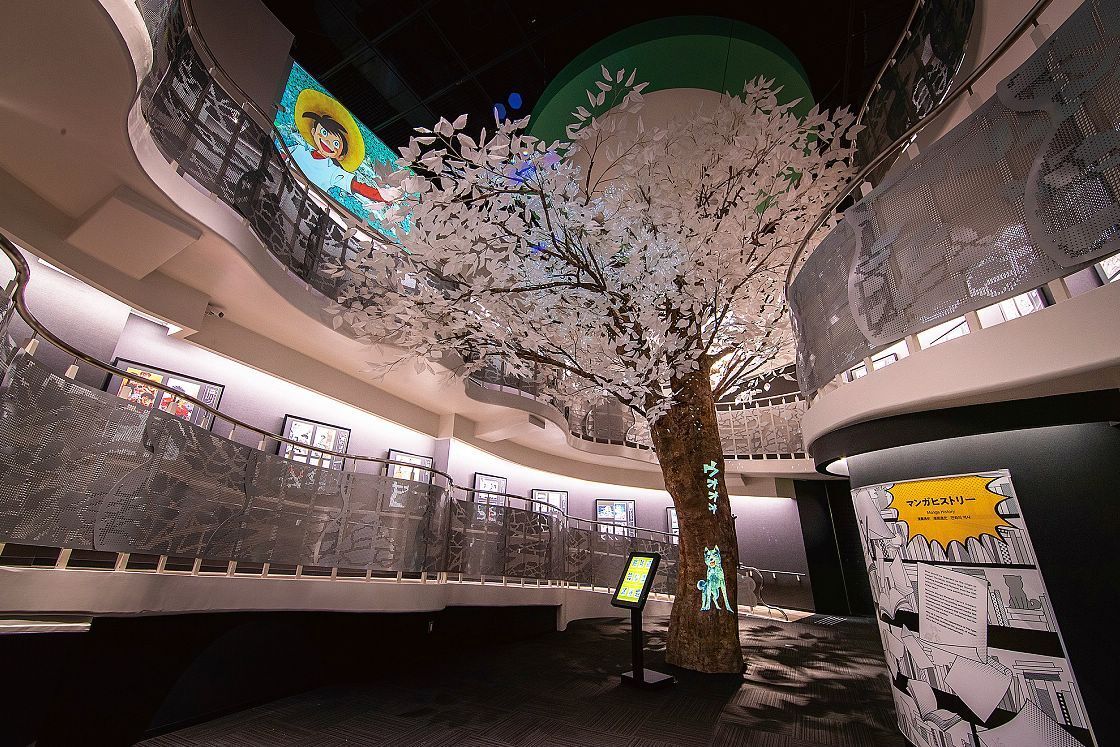

The museum features a range of facilities including a cafe, a manga culture exhibition room and - naturally - a well-stocked manga library, but one that especially stood out for me was its innovative Manga Kura or storehouse. Here, visitors can view a selection of works stored sequentially in drawers, or delve deeper into the museum's collection via wide, horizontally placed touchscreens able to zoom into the minute details - an invaluable resource for aspiring mangaka.
Back on our minibus, we made our way 83 kilometers northwest to Akita City, located about halfway along the prefecture's coastline. Located in the very heart of the city in front of Senshu Park, the Ando Tadao-designed Akita Museum of Art is a striking example of brutalist concrete architecture and home to a unique collection of works by the 20th century painter, Fujita Tsuguharu.
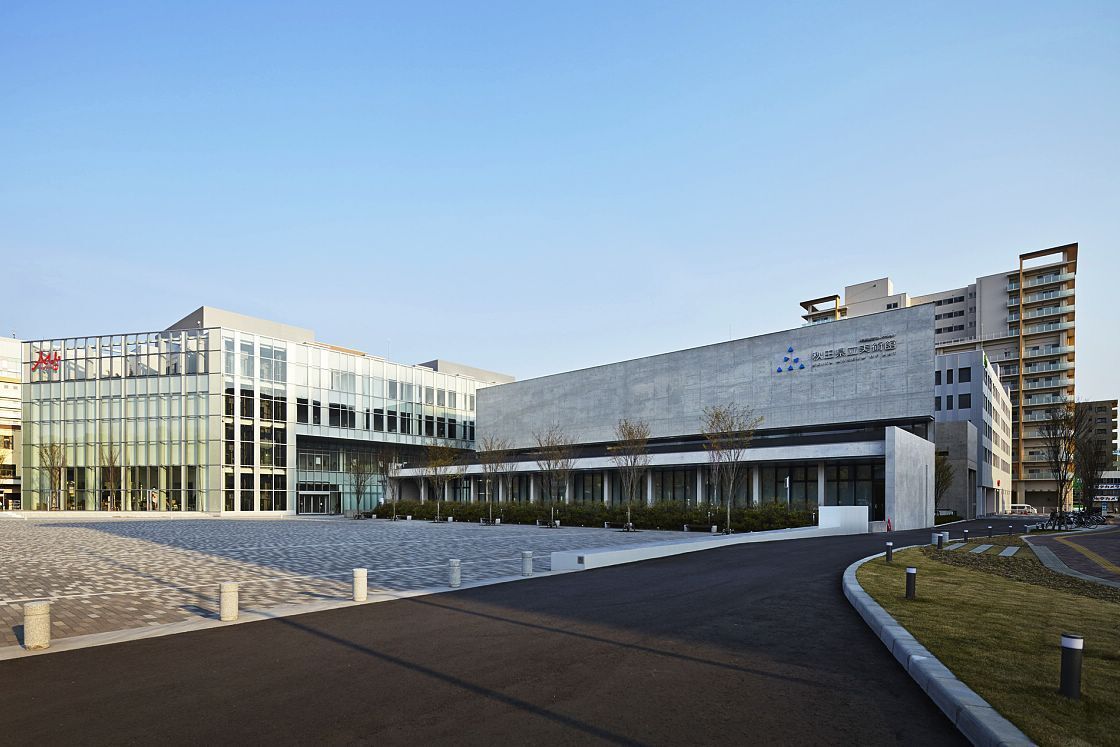
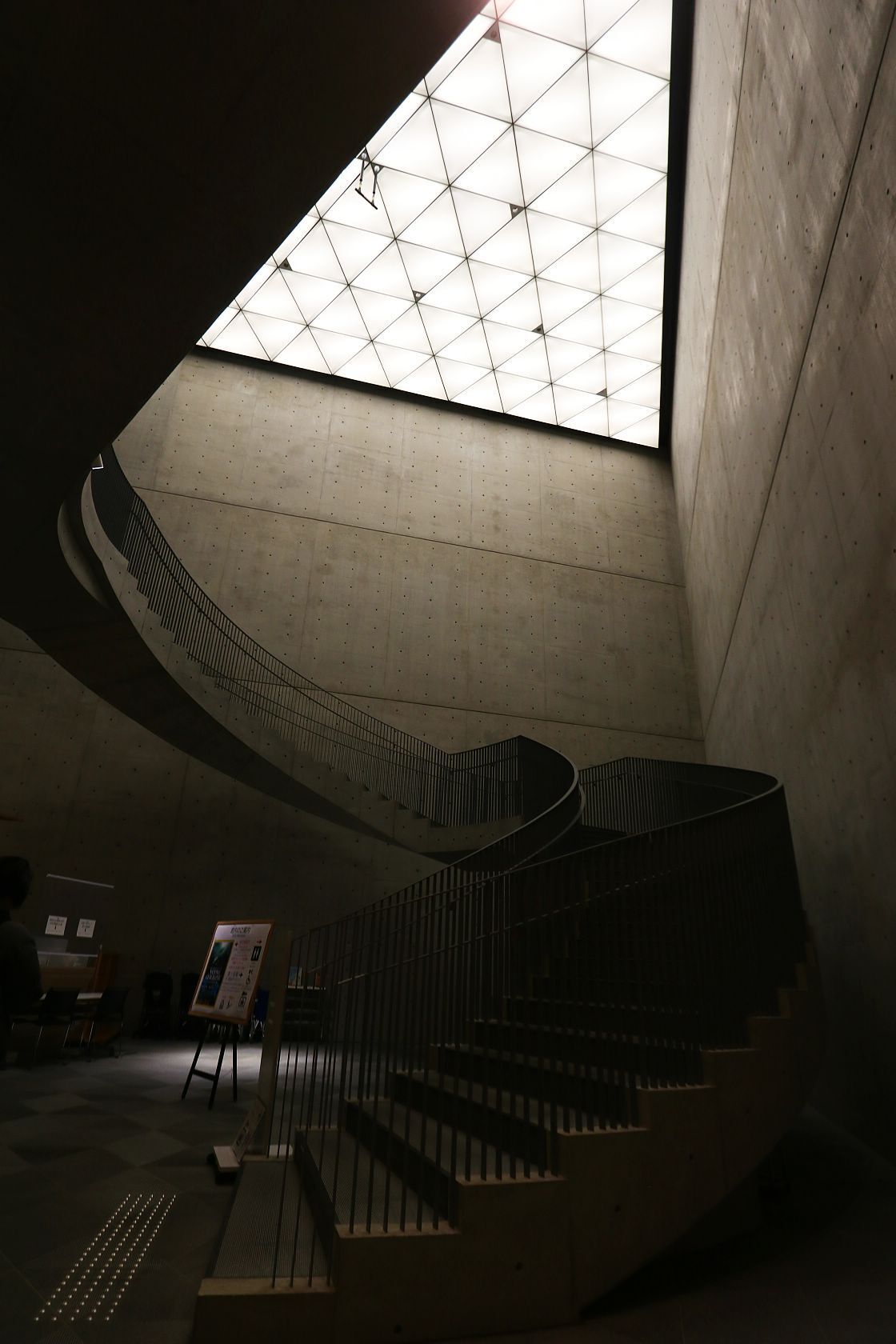
Having developed his own eclectic mix of European and Japanese-style painting during a lengthy stay in Paris, Fujita returned to Japan in the 1930s and created a number of works capturing the customs and people of Akita, the most famous of which hangs in a dedicated room within the gallery today. Measuring 3.5 by 20.5 meters, the massive Events in Akita fills an entire wall with its earthy, muscular depiction of the prefecture's four major festivals, unfolding seamlessly across the seasons.
After exploring the gallery, we rounded off a busy first day on the road with a special omakase menu at Sot l'y laisse - a local yakitori restaurant specializing in Akita's own free-range Hinai Jidori chicken. Originating from selective breeding with the older and now purely ornamental Hinai breed, Hinai Jidori chickens are set apart both by genetics and rigorous free-range farming standards, making for a meat that is exceptionally tender and flavorful.

Taking our seats in the little restaurant's casual but refined interior, we were treated to a dazzling sequence of small plates, each fulfilling the owner - Nakajima-san's - mission of gpreserving tradition while stepping away from it and creating something newh. Beginning with a simple starter of chicken liver pate, we quickly progressed through local favorites like Inaniwa udon - a variation on udon noodles with the bite and rich flavor of fresh pasta - then beautifully cooked cuts on skewers, ending with a hearty yet perfectly formed bowl of oyakodon - a rice bowl topped with simmered chicken, eggs and scallions.
Feeling full and hugely satisfied, it was at last time to head back to our nearby hotel in readiness for tomorrow's early start.
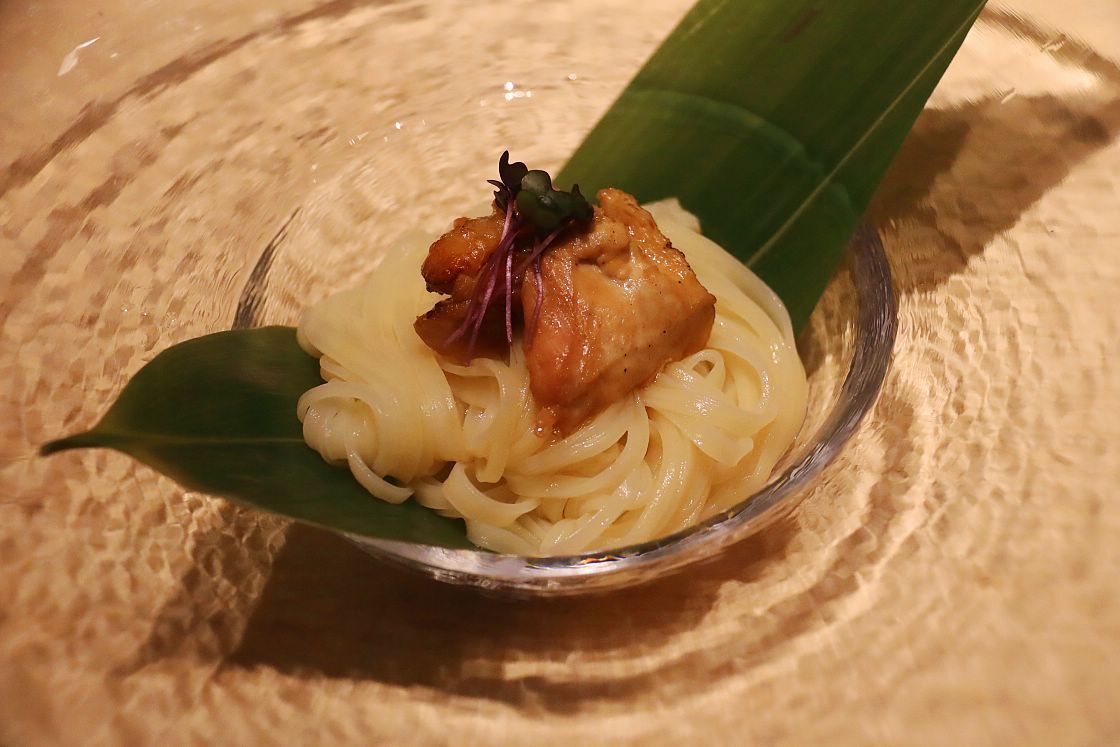
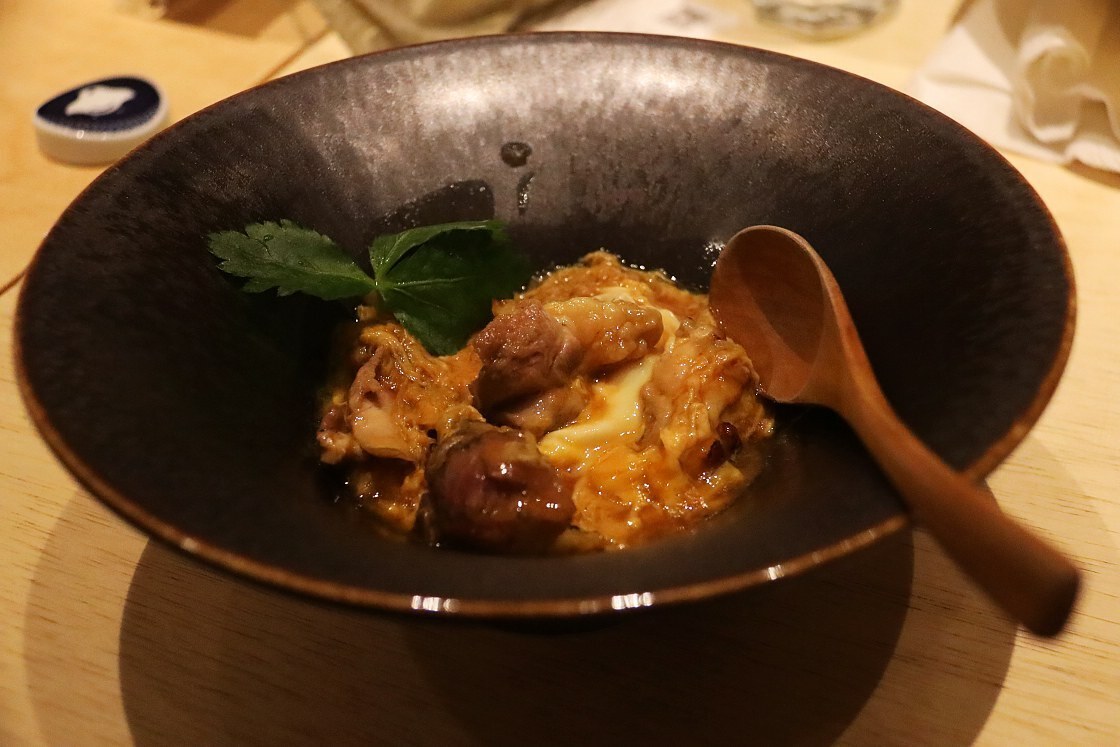
Day 2
The second day or our tour began with a visit to the Akita City Folk Performing Arts Heritage Center - a museum dedicated to three spectacular local festivals. In the Kanto Festival, held every year from August 3-6, skilled performers parade through Akita City while balancing rows of giant lanterns with poles hoisted aloft on heads, shoulders, palms and even hips. In the rather less known but still hugely exciting Tsuchizaki Minato Float Festival, which runs from July 20-21, neighborhoods centered on the Tsuchizaki Port district form a parade of festival floats festooned with heroic figures from Japanese history and legend. Lastly, the Bonden Festival takes place on January 17 and involves a rough-and-tumble race as teams compete to carry their wand-shaped banners to the Taihei Miyoshi Shrine.
After learning about the festivals, we had the opportunity to put our own powers of coordination to the test by attempting to balance a junior-sized lantern pole, called a yowaka. While it was easy enough to lift the thing, keeping it upright while scuttling this way and that proved much more difficult.
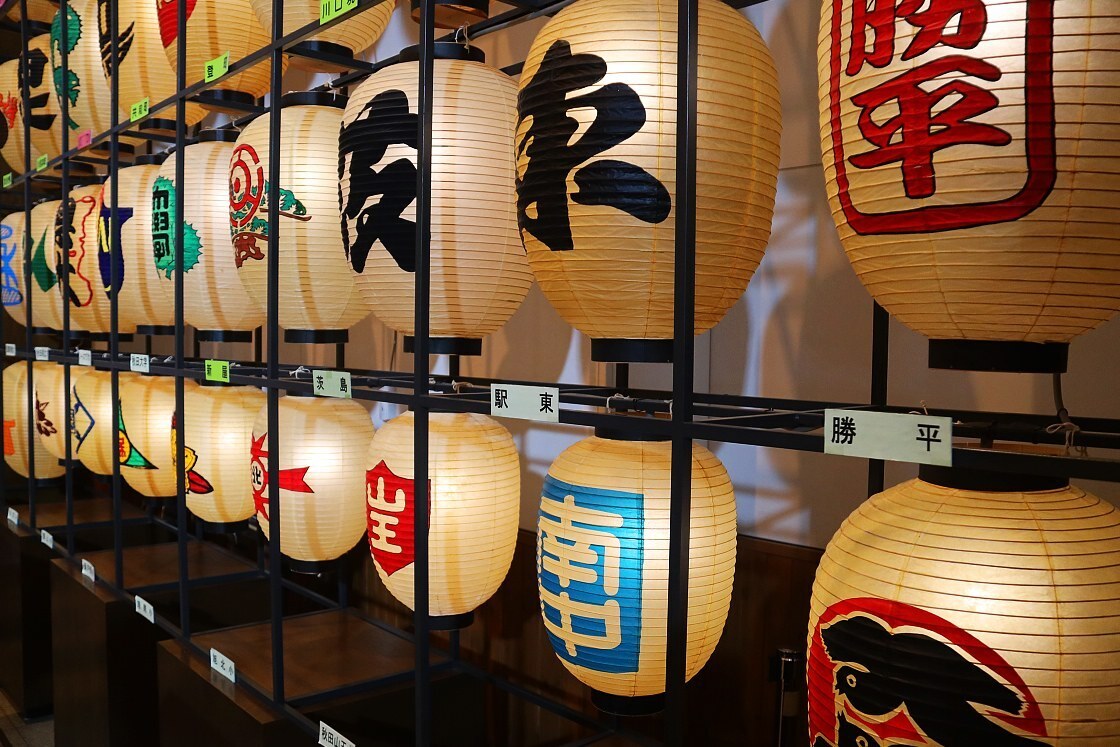
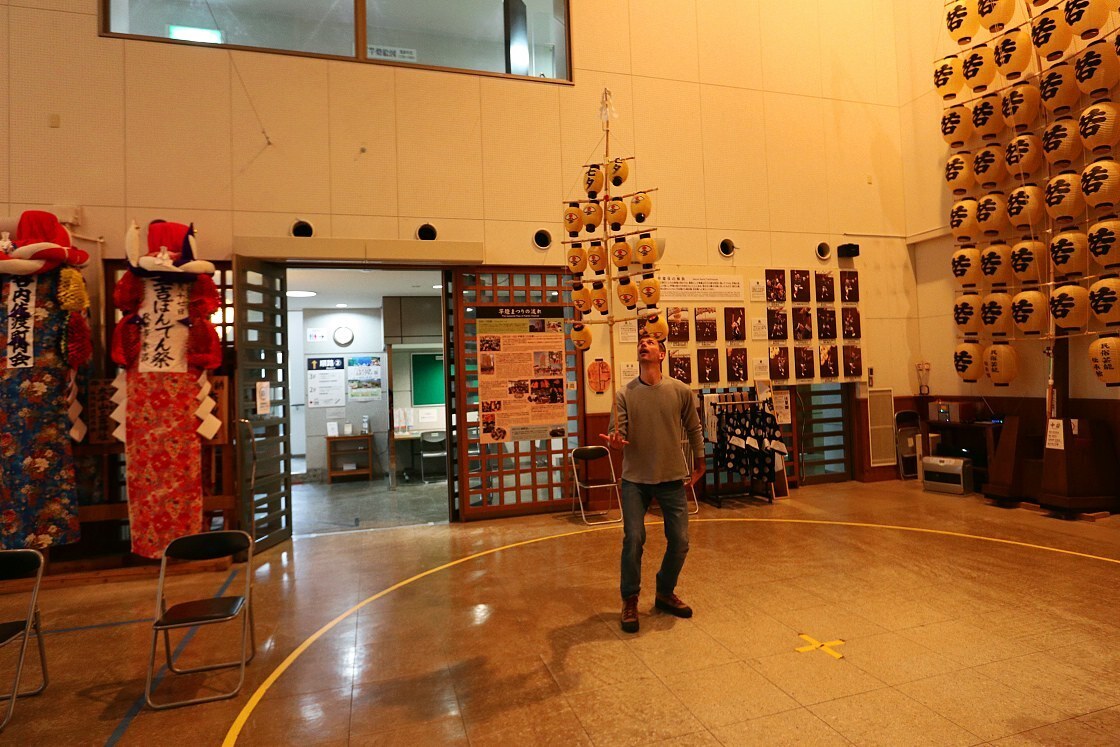
Located right by the museum and included in its price of admission is the Former Kaneko Residence, another beautifully preserved merchant house built in similar style to the ones we saw yesterday in Masuda. Inside, visitors can see an original uchigura dating to the Edo Period and a series of tatami rooms exhibiting various artifacts from the building's history.
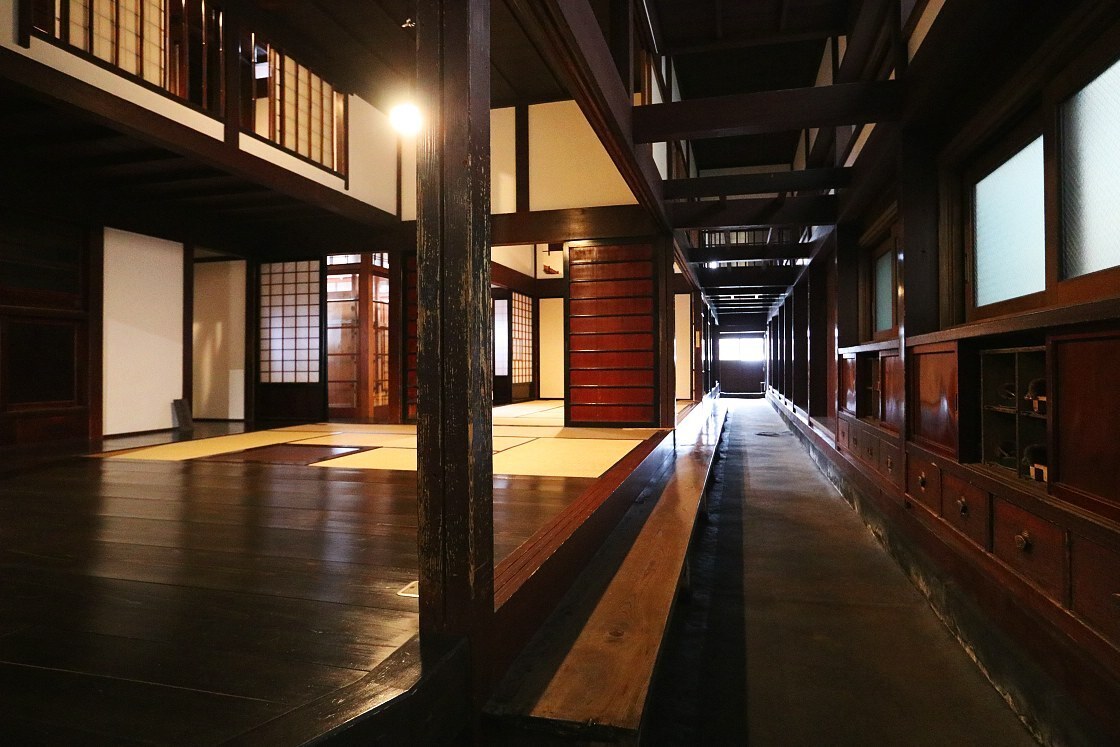

Setting off once again, we made our way north along the coast to the port town of Oga, on the underside of the peninsula of the same name, where we made a stop for lunch and souvenir shopping at Roadside Station Oga. On the menu were a selection of dishes made with another popular local ingredient - a kind of salted fish sauce known as shottsuru.
If fish sauce sounds a bit - well, fishy - you might be surprised to learn that shottsuru, made from locally caught sailfin sandfish, is extremely mild both in smell and flavor. While its most popular use is in hotpots, it is increasingly catching on as an all-round condiment, and went very nicely with my plate of seafood yaki soba, or fried buckwheat noodles.

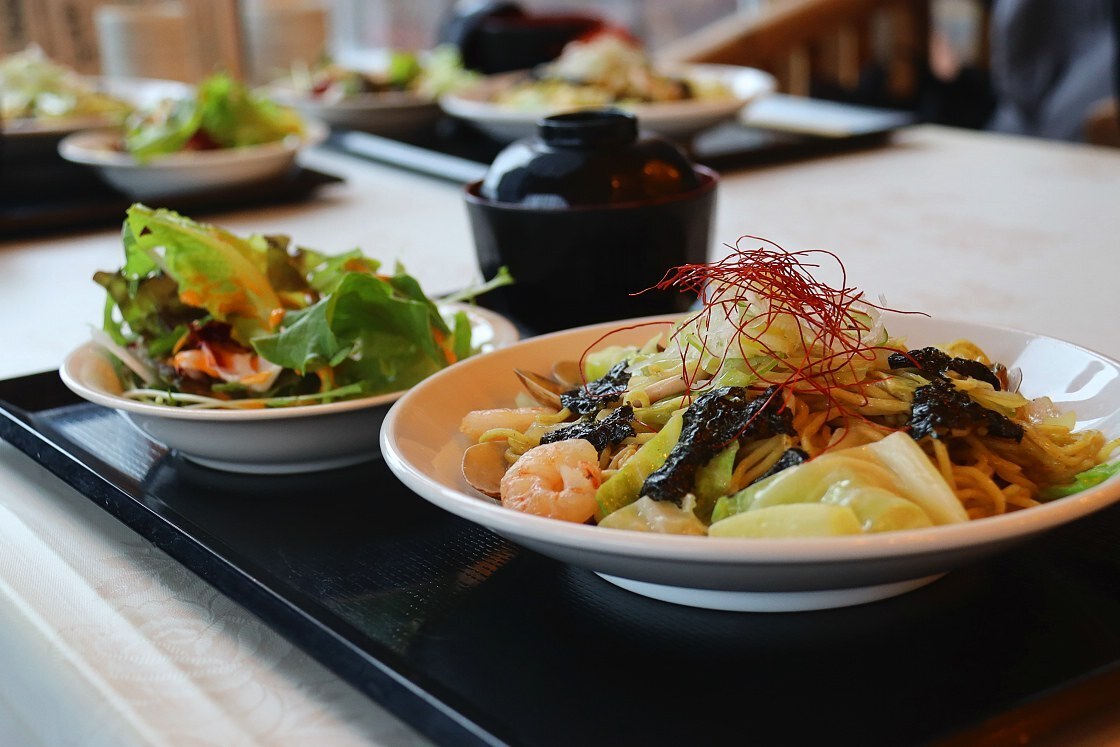
Our next stop on the peninsula was at Shinzan Jinja, a Shinto shrine said to date to the 9th century and long associated with the form of mountain ascetic practice known as Shugendo. Today, it is perhaps better known as one of the centers of a fascinating piece of folklore exclusive to Akita Prefecture, that of the namahage.
In a custom focused on but not completely limited to the Oga Peninsula, monstrous figures in painted masks and heavy straw overcoats appear at the homes of villagers on new years eve, roughly demanding to know if there are any disobedient children or gcrybabiesh around. After some back and forth, the parents in turn assure them that, no, the kids have been behaving themselves so there is no need to carry anyone off into the woods, and placate them with ritual gifts of food and sake.

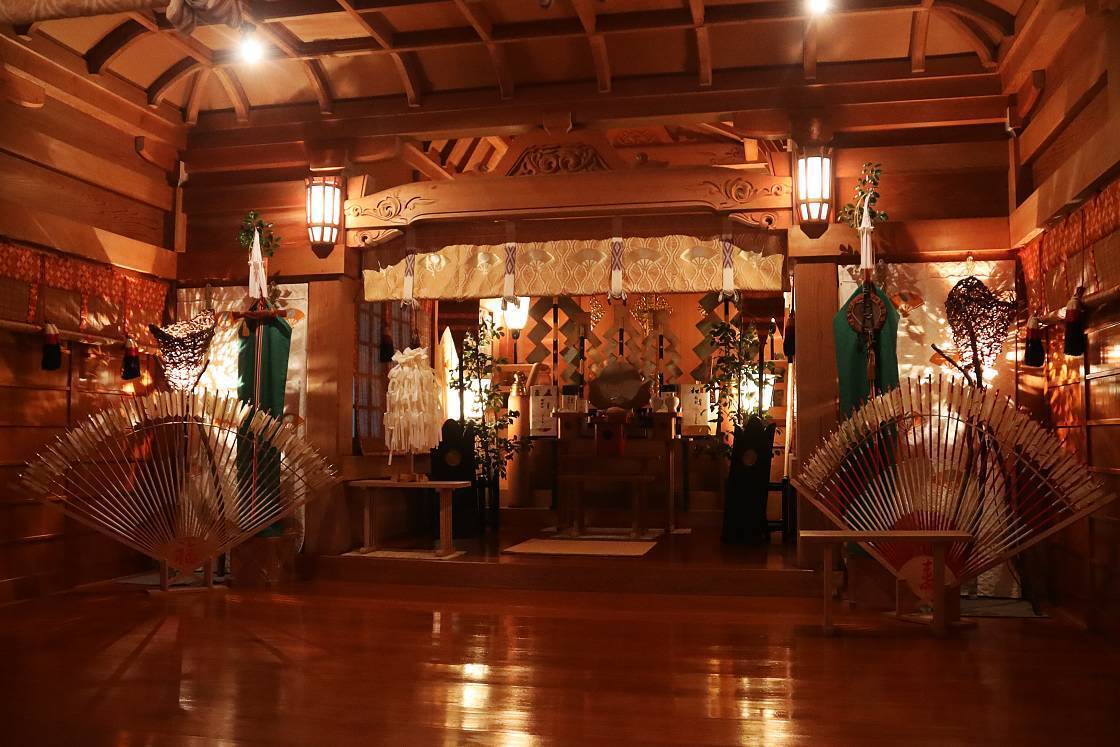
At the nearby Oga Shinzan Folklore Museum, we were treated to a detailed and thoroughly entertaining recreation of the event, beginning with an explanation by a local resident. Soon enough, two of the gcreaturesh announced themselves with stamping and loud bangs before loping boldly in.
After asking the resident about each of his family members in turn, the namahage turned their attention on the audience, leading to some nervously entertaining moments - the performers clearly relished the role of making visitors jump, and it was easy to imagine what a terrifying spectacle the tradition must be for the young children at the receiving end!
Located just a few steps away, the Namahage Museum was a great way to round off our experience with the unique local custom. Here, visitors can recap its origins and watch a local community act it out in a video presentation, before taking in an exhibition of dozens of the distinctive costumes - each with its own mask and tool or weapon, unique to the village community it is gresponsibleh for.

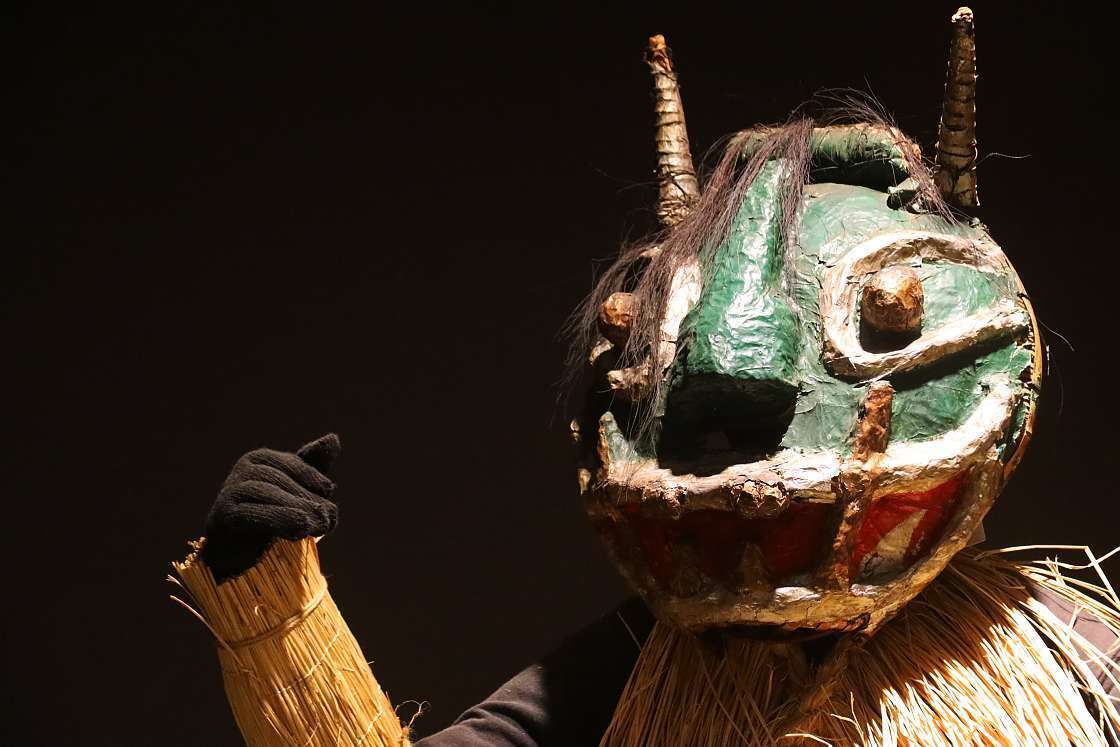
By now the sky was beginning to darken, but there was still just enough time to catch the sunset at Cape Nyudozaki - the northernmost point of the Oga Peninsula and one of its best known scenic spots. In addition to a stunning view over the rocky cliffs and out across the sea of Japan, the cape is home to two interesting landmarks: standing 28 meters tall, the elegant Nyudozaki Lighthouse dates to 1898 and ranks as one of the 50 Great Lighthouses of Japan, while just a few steps away an unusual looking monument marks the exact line of the 40th parallel north circle of latitude, putting it on a level with the cities of Beijing and New York.
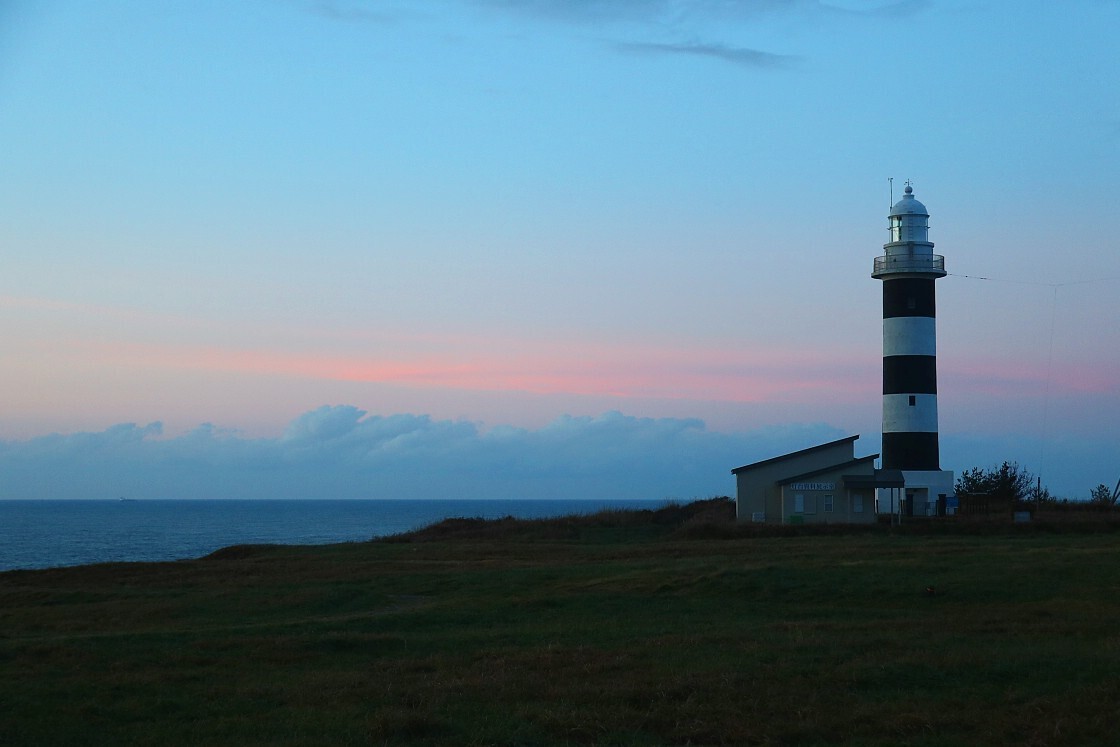
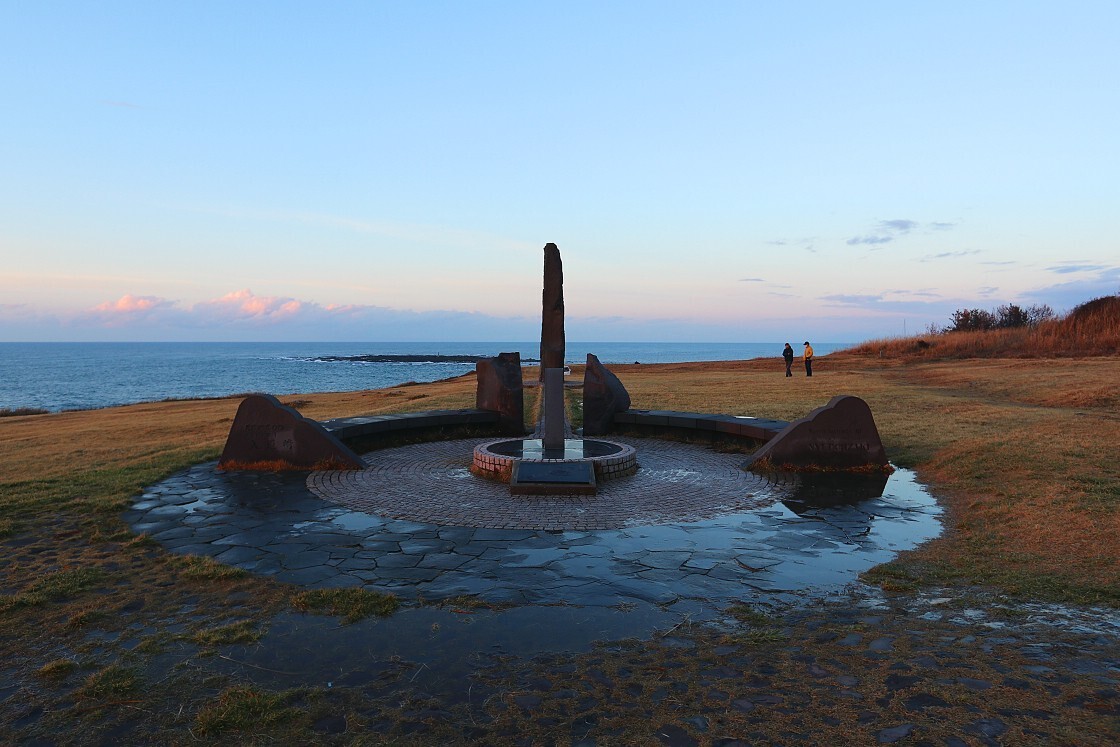
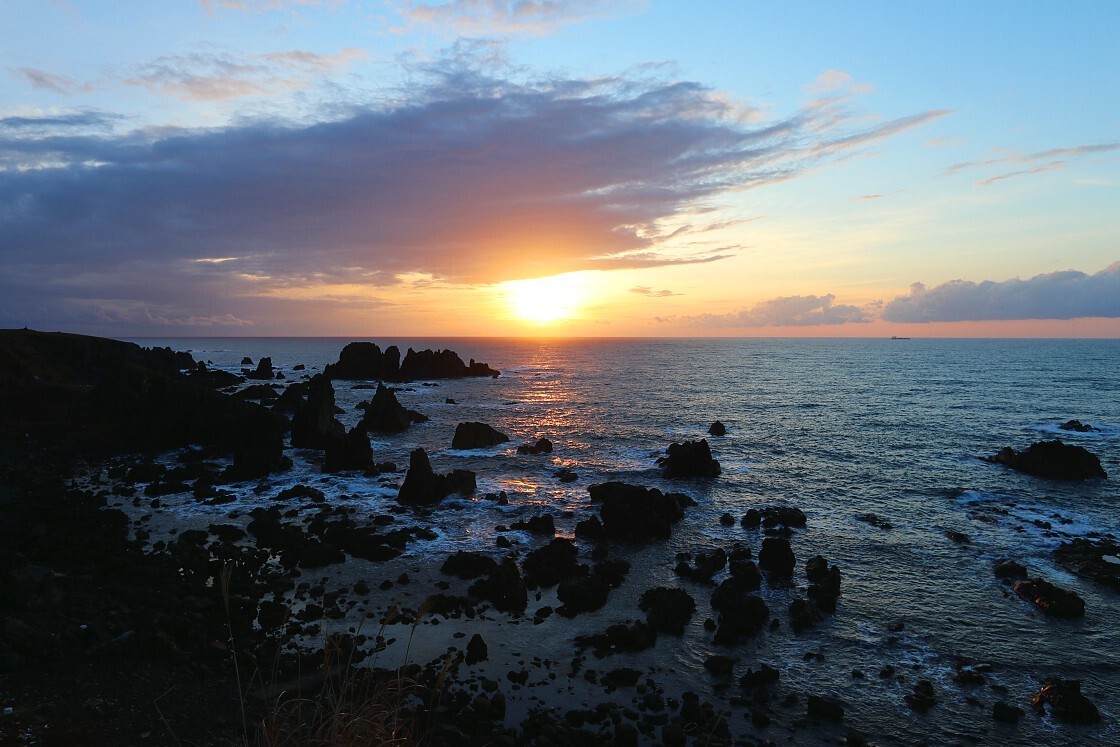
With our busy day of sightseeing at an end, it was time to retire to our accommodation for the night at the Seiko Grand Hotel, located just a few minutes' drive away on the peninsula's northern shore. Upon checking in, I immediately made my way down to the hotel's hot spring baths for a well-deserved pre-dinner soak.
For our evening meal, we enjoyed a beautifully presented kaiseki-style banquet with an intriguing local twist - a kind of fish hotpot cooked in front of us with the use of heated stones. Known as ishiyaki, the method originated with local fishermen and has the effect of bringing the water to a very quick boil - locking in the flavor of ingredients while separating out the fat for a leaner, meatier taste.

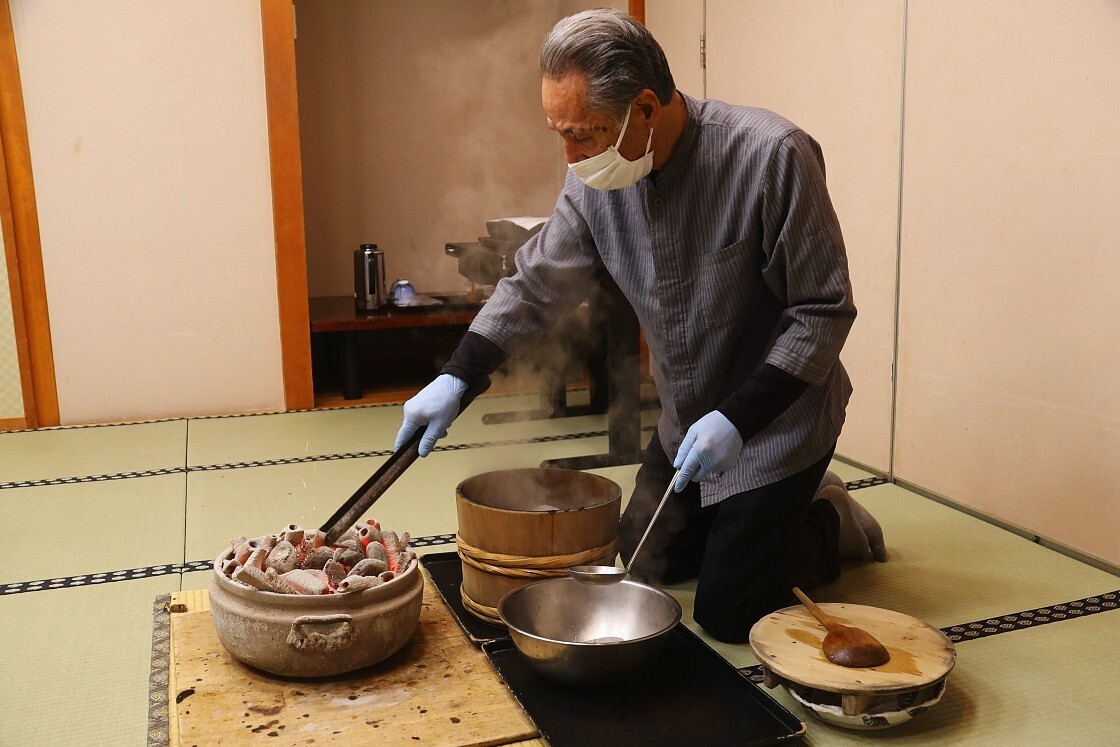
Feeling happily exhausted, thoroughly relaxed from the natural hot spring baths and now extremely full, it was once again time to turn in ready for another busy day of traveling.
Day 3
After an early breakfast, we set off on an 80-minute drive northeast to the town of Odate. First on the day's itinerary was the Akita Dog Visitor Center, a tourist exchange facility located directly across from Odate Station and dedicated to the hardworking and famously loyal local breed.
With a history going back at least 1,000 years, the Akita Inu was mainly bred here in the Odate region for the purpose of hunting large game such as deer, serow and even bear. The breed's reputation continued to grow over the centuries, becoming a popular companion dog for samurai from the 16th to 18th centuries.
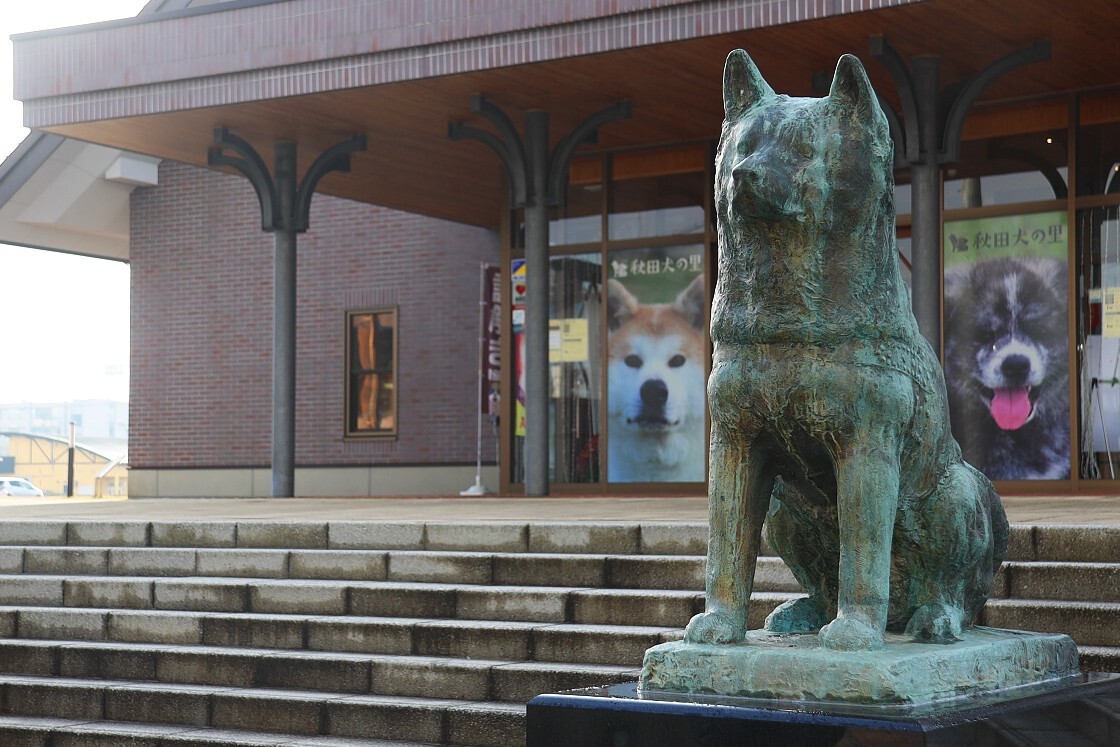
Although deemed a National Living Monument in 1931, the breed was nonetheless branded a non-military dog and culled during the Second World War, returning from the brink of extinction only through a painstaking process of selective breeding.
Today, the breed is perhaps best known to non-Japanese from the popular true story of Hachiko - a white Akita born in the 1920s, who continued to wait every day for his deceased master at Shibuya Station until his own death ten years on, later to be immortalized in the form of a bronze statue that still serves as a popular Shibuya meeting-spot.
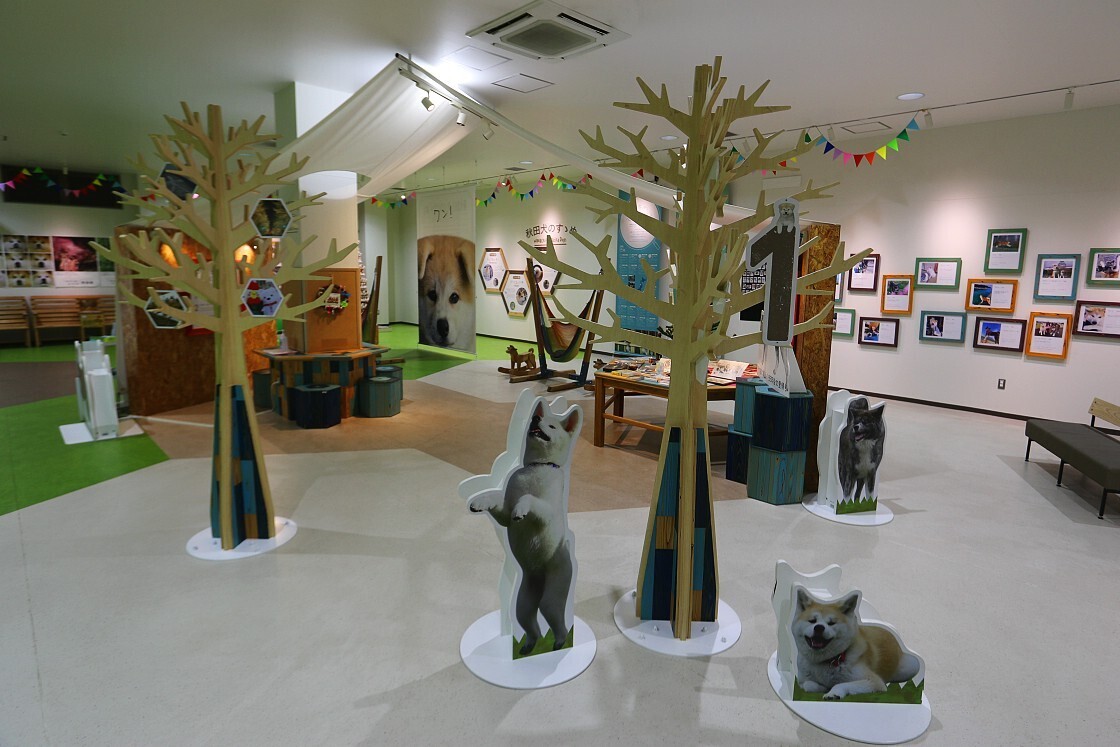
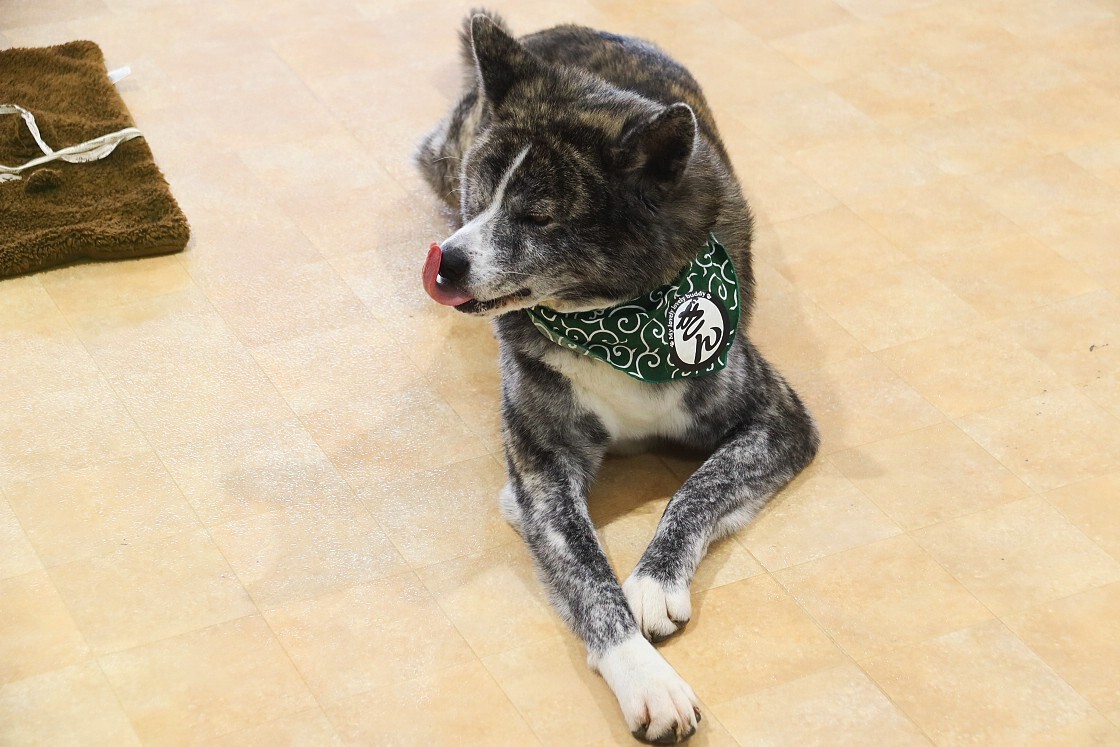
For visitors to Japan eager to learn more about the breed, the visitor center offers a wealth of information, the chance to chat to local volunteers and even meet one of the dogs in a special exhibition room - although due to COVID-19 restrictions, the latter remains only possible through a large glass window.
After a brief stop at the visitor center, it was time to make our way to the nearby craft workshop Shibata Yoshinobu Shoten to take part in a unique experience - learning how to make a traditional wooden lunchbox, or magewappa.
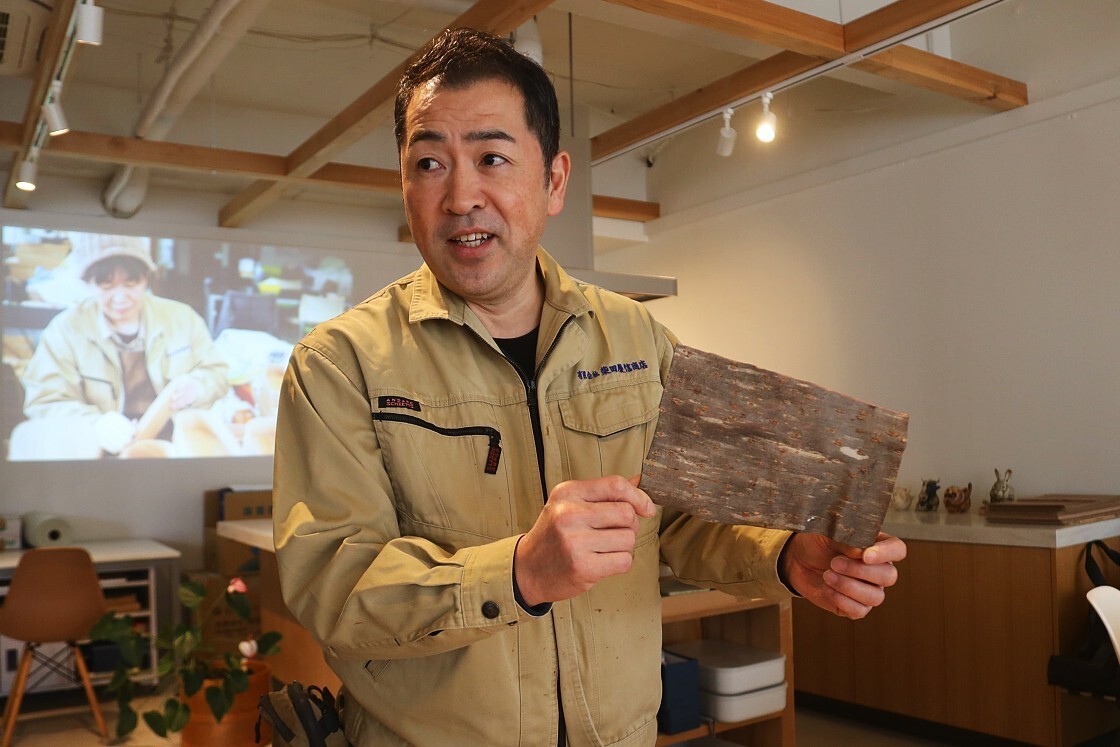
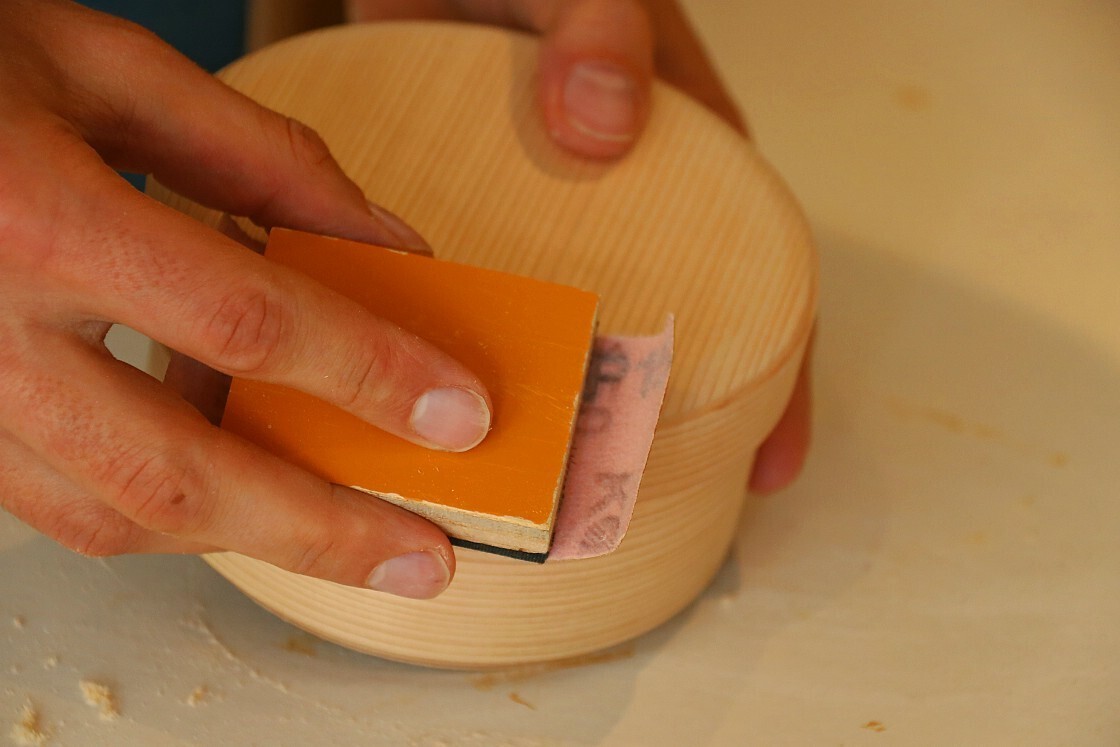
A second generation family business, the Shibata company distinguishes itself by creating each one of its lunchboxes without the use of machinery, requiring every piece to be painstakingly cut, planed, steamed and assembled by hand. Since its founding in 1966, the brand has gone from strength to strength and today has permanent stands at Iwataya and Mitsukoshi department stores.
Guided by Mr. Shibata Yoshimasa, we began by bending strips of fresh-smelling cedar, then wrapping them into a circle and inserting a planed disc of the same wood to form a lid, secured in place with a single thread of wild cherry bark. With Shibata-san's expert help, our boxes soon came together, leaving us not only with an attractive souvenir but a serious appreciation for the meditative and deeply satisfying act of making it. Running my hands over the smooth edges of my magewappa's freshly sanded lid, I found that I could imagine the simple joy of making something similar, over and over again.
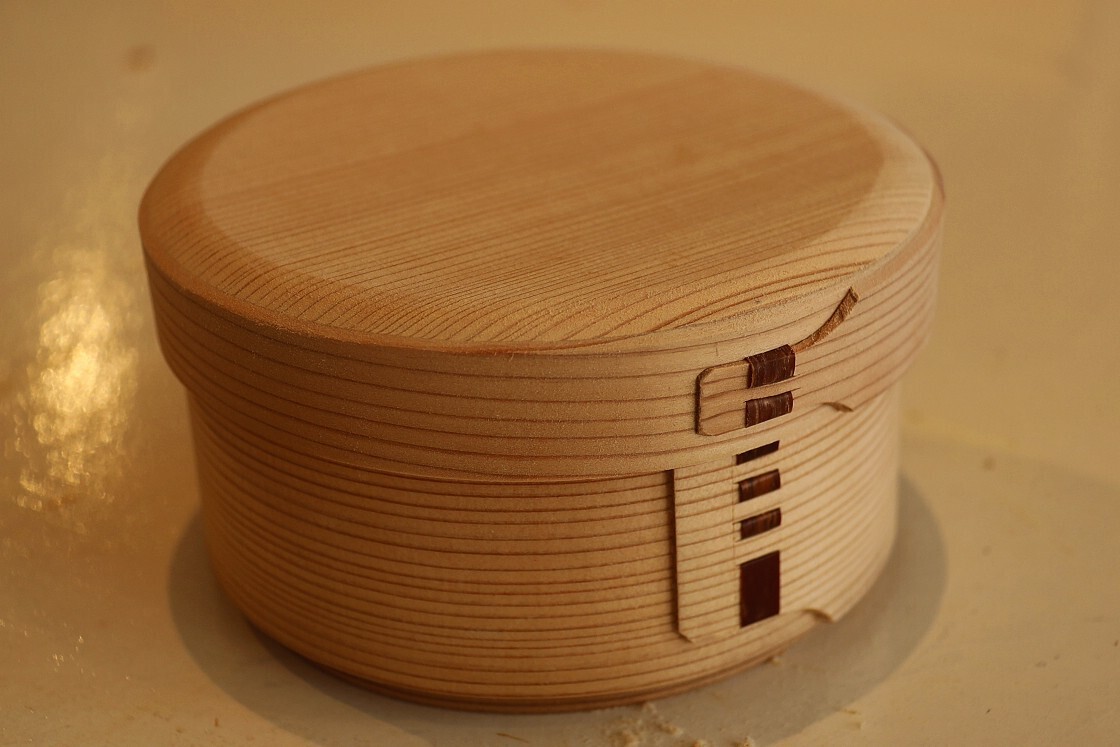
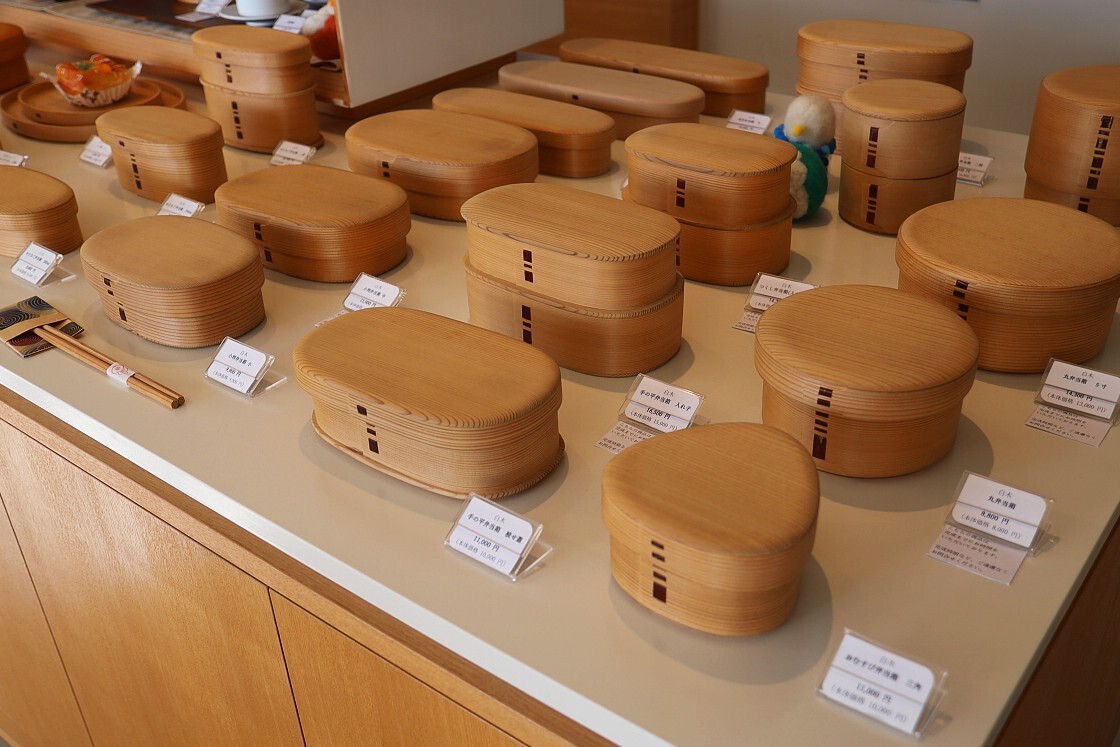
Our final stop in the town was at Hanazen - a restaurant specializing in packed lunch boxes for all occasions but especially known for its gekibenh or lunch boxes made to eat on train journeys. Rather than take it with us however, we decided to sit down to enjoy our meal - a series of small but perfectly formed dishes, with Hanazen's signature dish of sweet chicken and rice at its heart.
The dish can be traced back to the lean years immediately after the Second World War, when rice, sugar, soy sauce and burdock root were all tightly rationed. To get the most from their limited supply, the restaurant staff would often mix them all together with chicken and rice. When a large batch failed to sell, they attempted to reuse the chicken by boiling it with sugar - discovering a delicious new recipe in the process.

After a delicious lunch, it was time to get back in the minibus for a half hour westward drive to the next town of Takanosu, from where we would be embarking on a leisurely train journey aboard the Akita Nairiku Line to the historic town of Kakunodate.
Known as the gSmile Railh, the Nairiku Line is a small rural railway spanning 29 stations and 94.2 kilometers of unspoilt country landscape, much of it straddling the border between flatland and low mountains. Settling into one of the line's single carriage trains - something that always makes me think of the Japanese countryside - I relaxed and took in the varied scenery as it rushed past my window.

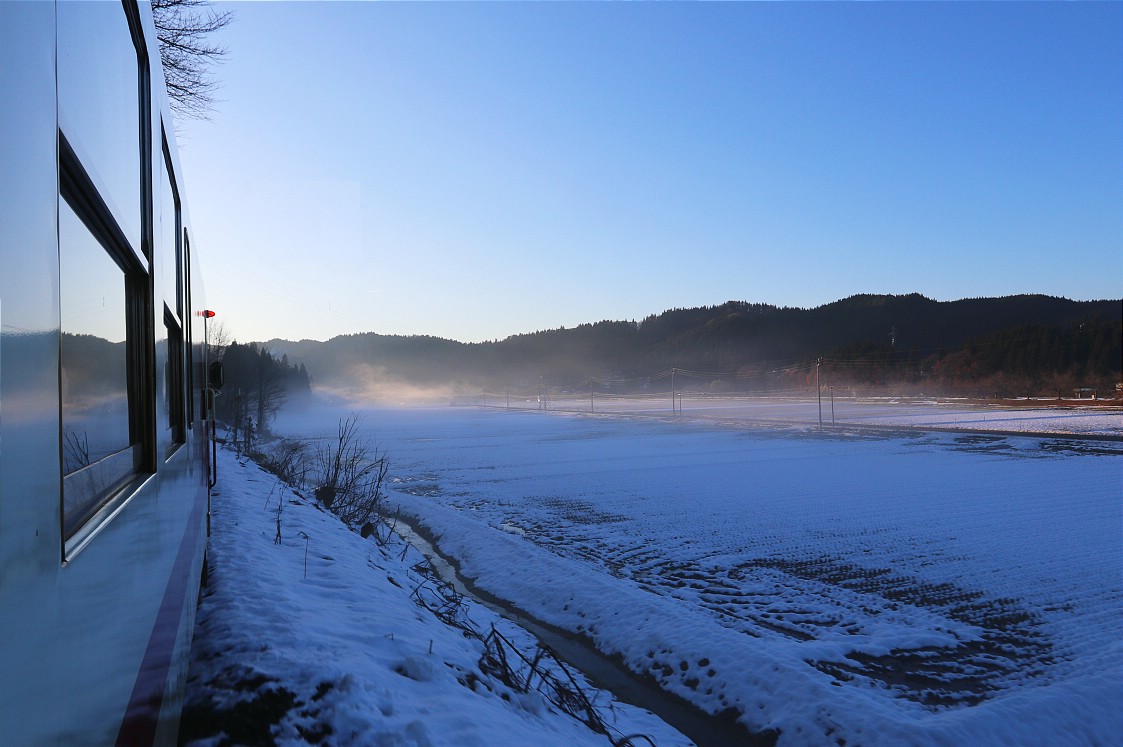
It was already full dark as we pulled into Kakunodate Station some two hours later. From here, we made our way on foot to our accommodation for the night, the Tamachi Bukeyashiki Hotel - a warm yet unpretentious hotel built in the same spartan style as the samurai residences Kakunodate is famous for.
While the hotel itself has no hot spring baths of its own, staff were kind enough to point me to the nearby Kakunodate Onsen, located just ten minutes' walk away along quiet backstreets.

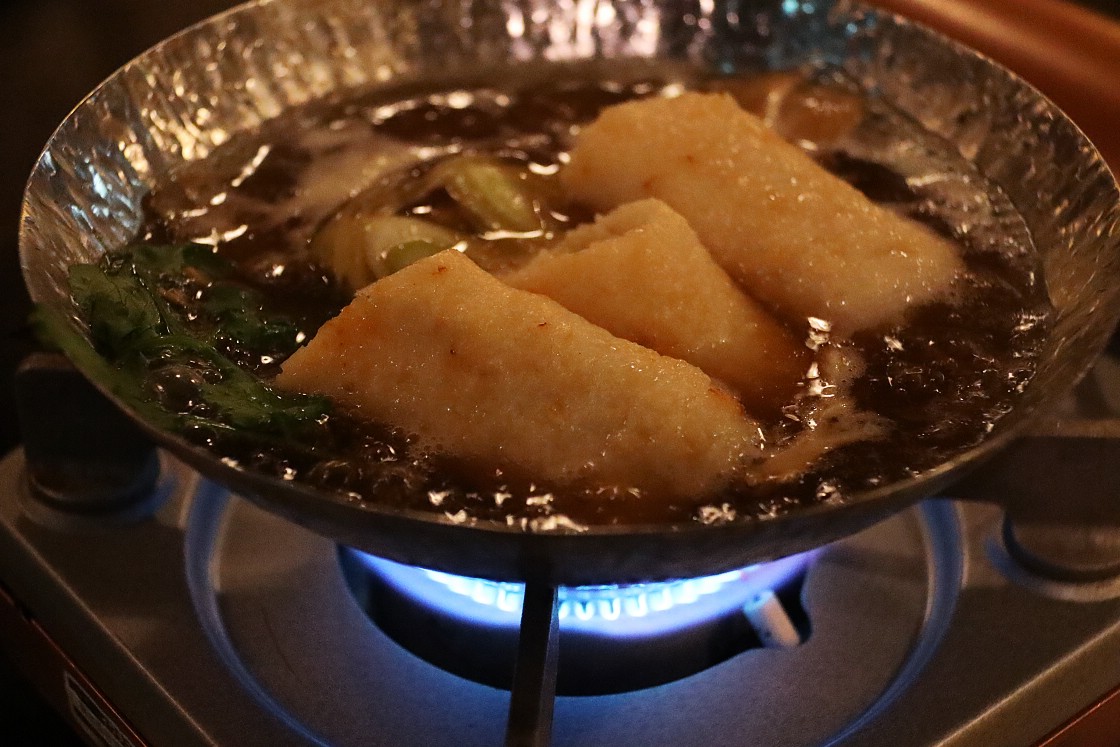
Feeling revived after a second night of hot spring bathing, it was soon time to make my way back to the hotel for another culinary treat - another sophisticated course banquet, this time culminating in a hearty hotpot of meat, vegetables and sticky, crushed tubes of rice called kiritanpo. Ending my day with another enormous meal, I settled back into my cozy western-style room for the night and was soon fast asleep.
Day 4
My final day in Akita began with a visit to the Suzuki Sake Brewery - one of the oldest breweries in the prefecture, located in the neighboring town of Daisen some 15 minutes drive to the west.
While the elegant timber structure currently housing the brewery dates to Japan's Meiji Period, the business itself traces its origins still further to 1689. Its brand name of Hideyoshi is said to come from an especially proud moment in the company's history when, in 1848, the local feudal lord tried a cup of their sake and declared it gHiidete-yoshih or extremely good in the dialect of the time.
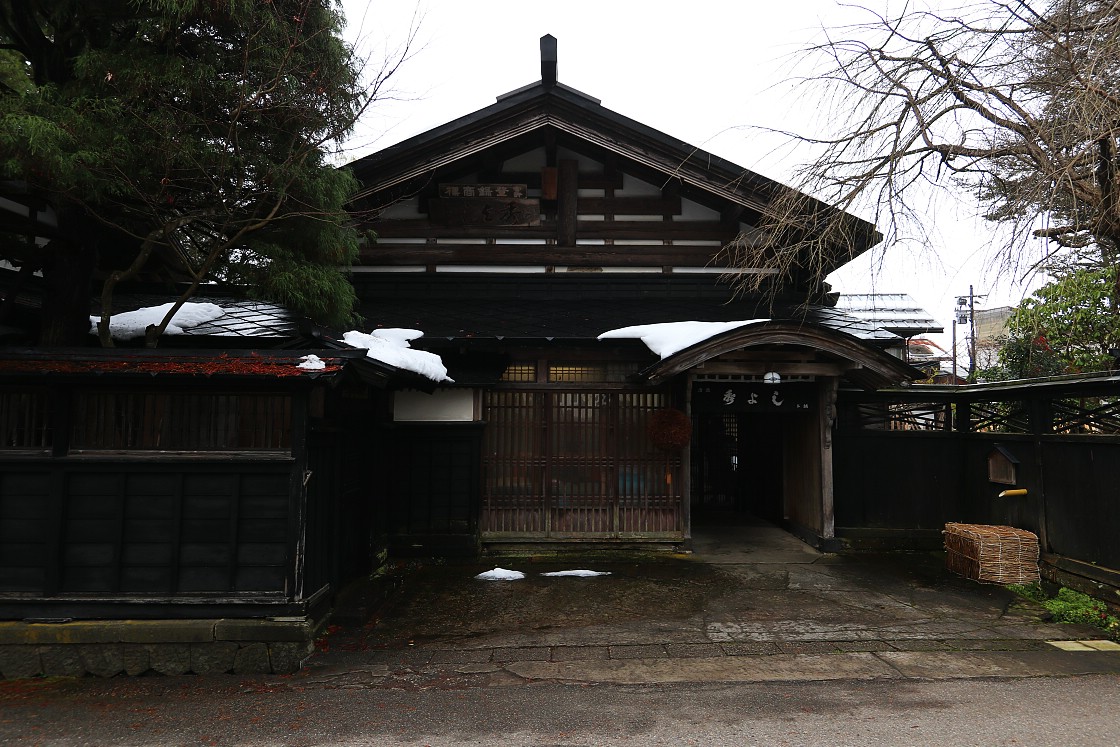
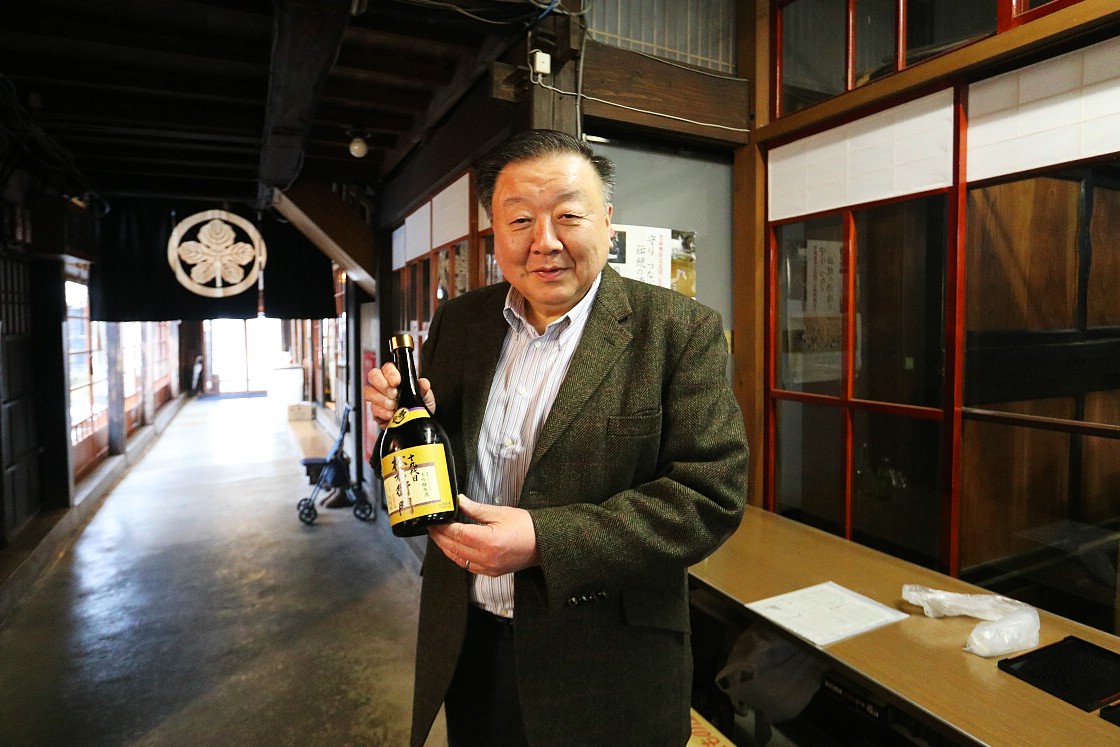
Passing through a gate decorated with a hanging sakabayashi - a hanging ball of cryptomeria leaves traditionally indicating a place where sake is brewed - we were ushered inside by friendly English-speaking staff for a look behind the scenes at the brewing process.
In the same time honored process employed across Japan, staff at the Suzuki Brewery begin by polishing rice - shaving away the protein, fat and other impurities found in the outer layer of the kernel to reveal the starchy interior, called the shimpaku.
Now reduced in size by as much as 75%, the polished grains are then washed and steamed in large containers - a process we had the chance to watch first hand as we made our way through the brewery's factory floor. Once it has cooled, the moistened rice is spread out in a special room where koji - a specially cultivated mold used to generate useful enzymes - is introduced. After an interval of three days, the same enzymes will have broken down some of the rice's starch into sugars - allowing the next stage to begin.
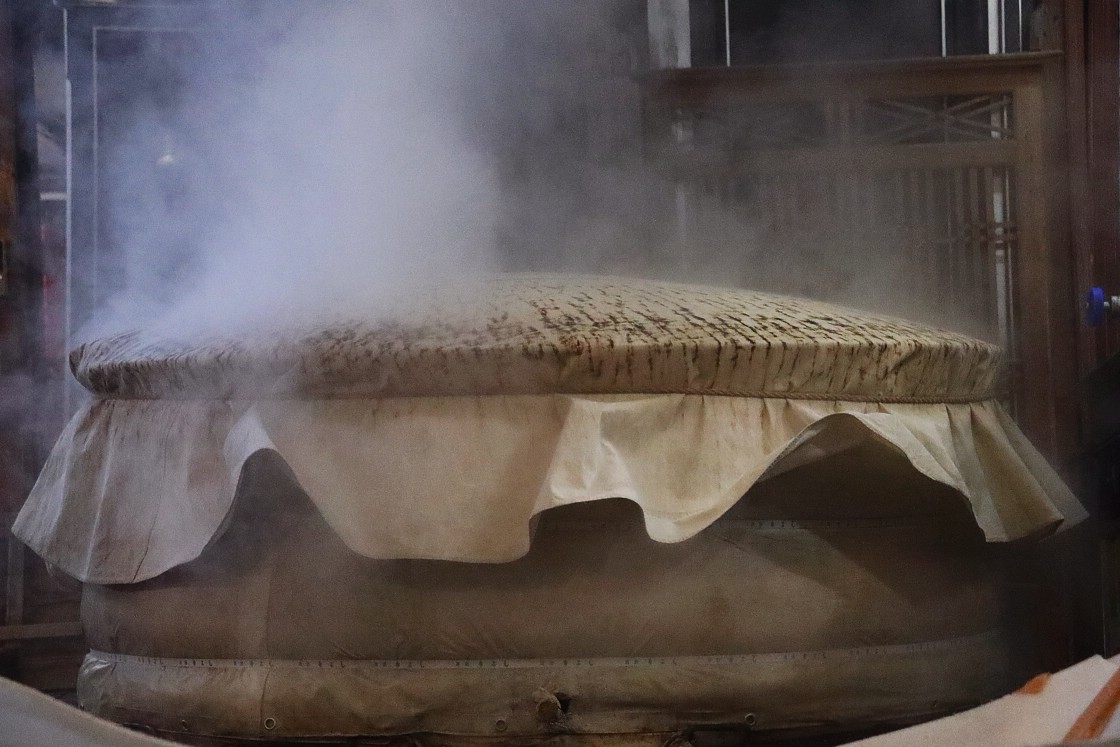
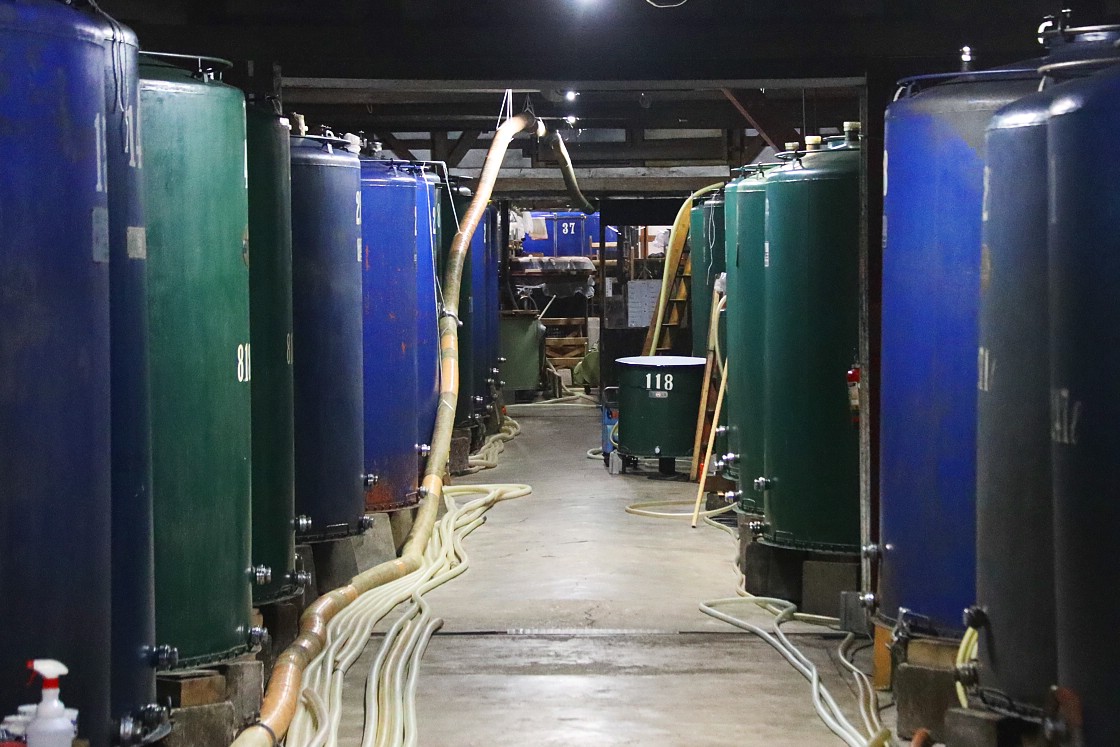
This takes place in large barrels, where the rice is mixed with water and yeast, then allowed to ferment for a period of 14-35 days, depending on the strain of yeast used. From there, the resulting thick mash is pressed through sieves to create a liquid beginning to resemble sake, which can at last be left to mature into the final product over a longer period of around three months.
After a fascinating look into some of the processes involved, we ended our time at the brewery with a chance to try some of its flagship bottlings - beginning with one of the more standard options, followed by a light and slightly sparkling expression and ending with a rarer and more unique vintage version.
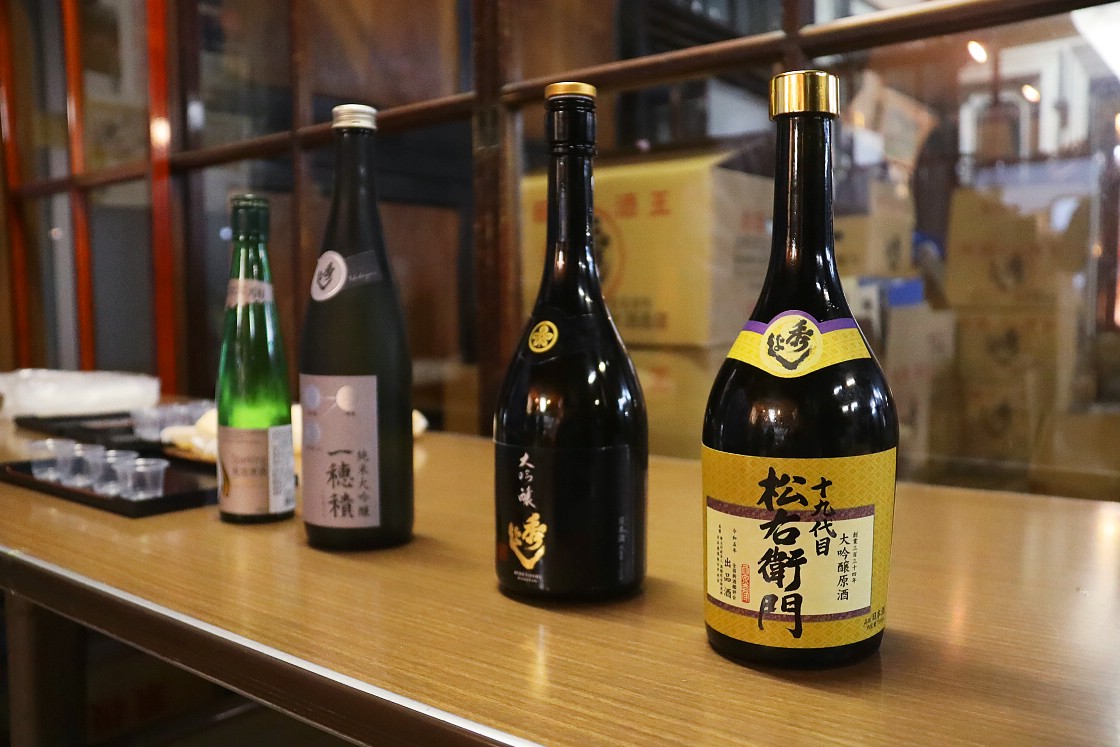
Saying our goodbyes, we left the brewery behind and retraced our steps to the center of Kakunodate for a visit to two of its original Edo Period samurai residences. Founded in 1620 in something of prime location - ringed on three sides by mountains, with rivers to the south and the fertile land of the Semboku plain within easy reach - Kakunodate quickly grew into an attractive and prosperous castle town, earning it the nickname gLittle Kyoto of Michinokuh, Michinoku being an old name for the Tohoku Region.
While the town's fortunes went into something of a decline in the coming centuries, its samurai district that once housed some 80 families has remained remarkably true to its original appearance, with several surviving samurai mansions tucked away behind neatly walled streets lined with tall, stately trees.
Our first visit here was to the Ishiguro Residence, a smartly austere house known for its lovely pine garden, its elegant thatched roof, and for being the only historic home in the district still inhabited by a descendent of its original family. A warm and energetic host, the 13th generation Ishiguro-san more than made up for his limited English with natural enthusiasm as he guided us around the tatami-matted interior of his Edo-Period home.
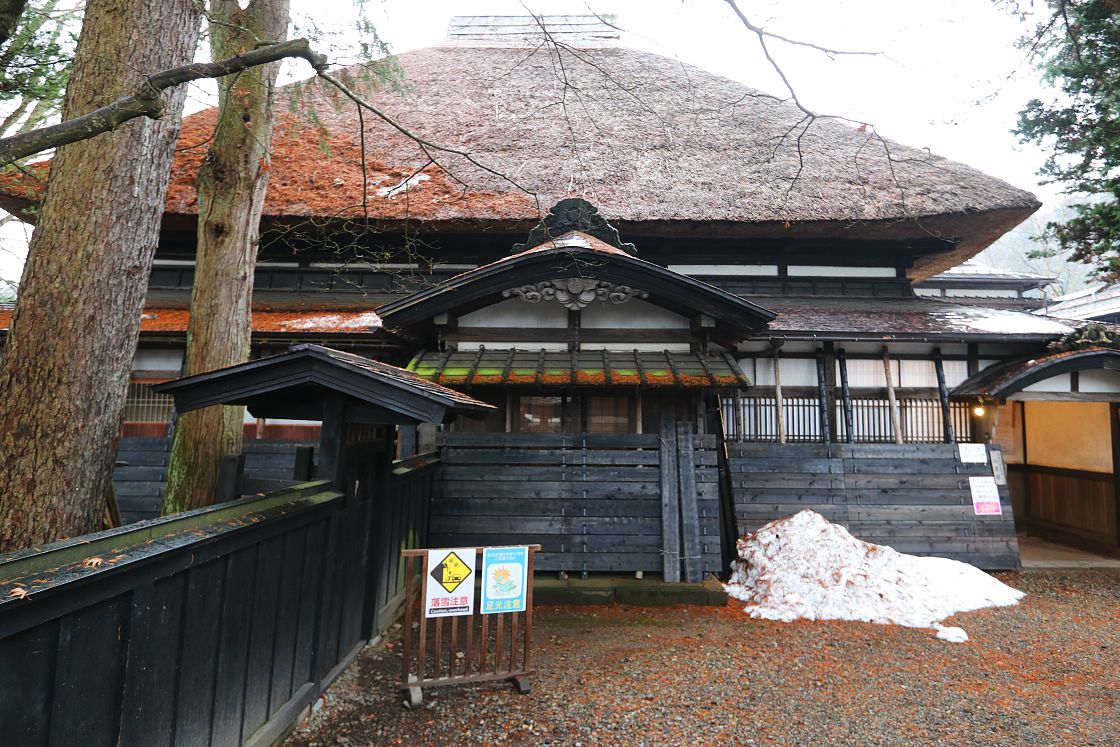
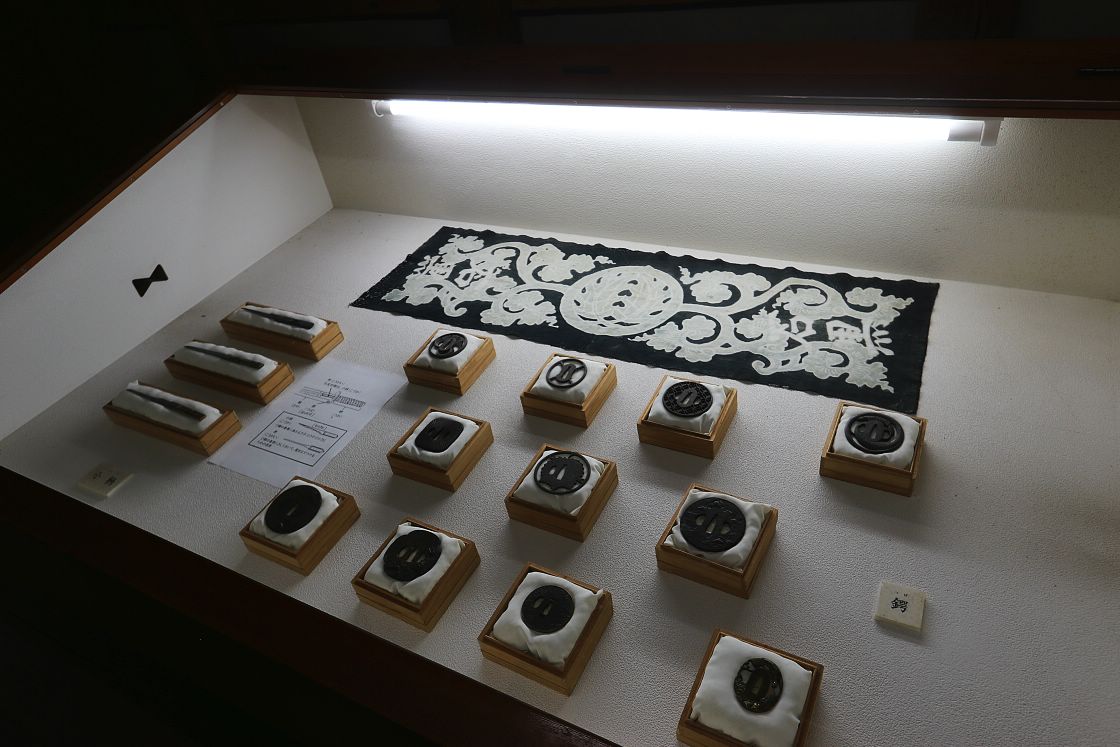
After this introduction to the residence proper, we were free to explore one of the outbuildings, today housing a couple of exhibits relating to everyday life in former times and an enclosed uchigura containing the owner's collection of historic items.
Next up was the Aoyagi Residence - the largest of the original houses and today an extensive museum with exhibits spread across eleven separate buildings. By now our time was beginning to run short, but I was able to quickly take in two of my favorite spots: an impressive collection of weapons and armor housed in an old storehouse, and the Akita Folk Museum - in fact an old farmhouse relocated here from the countryside.
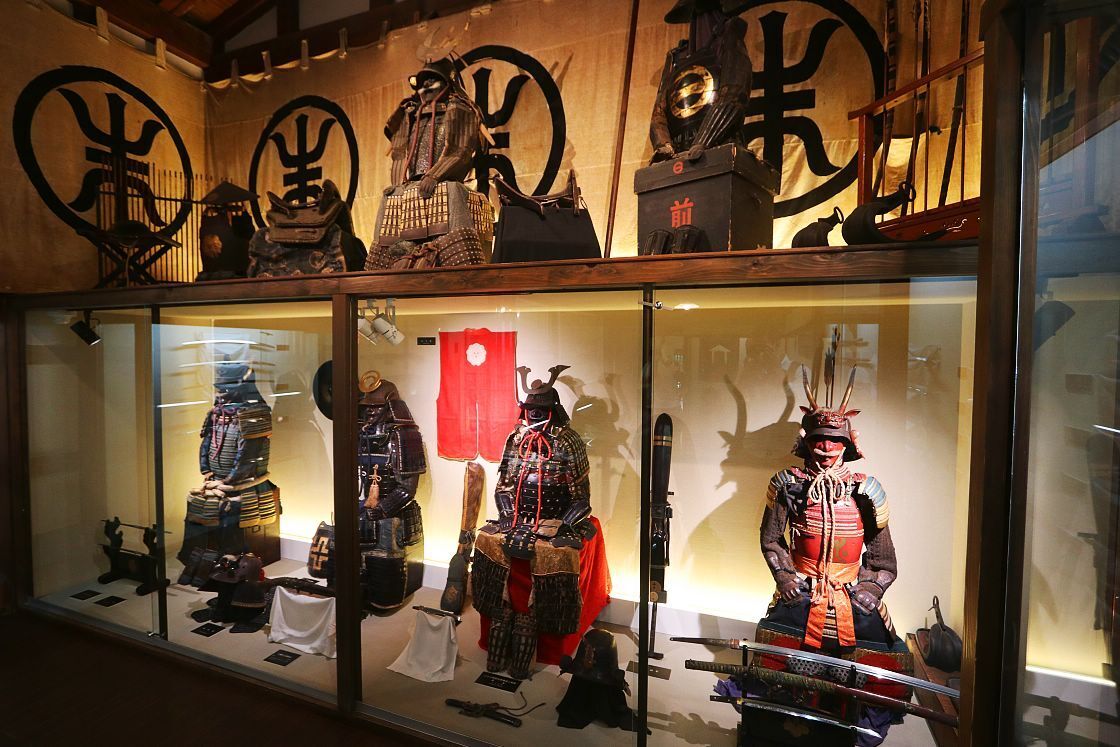
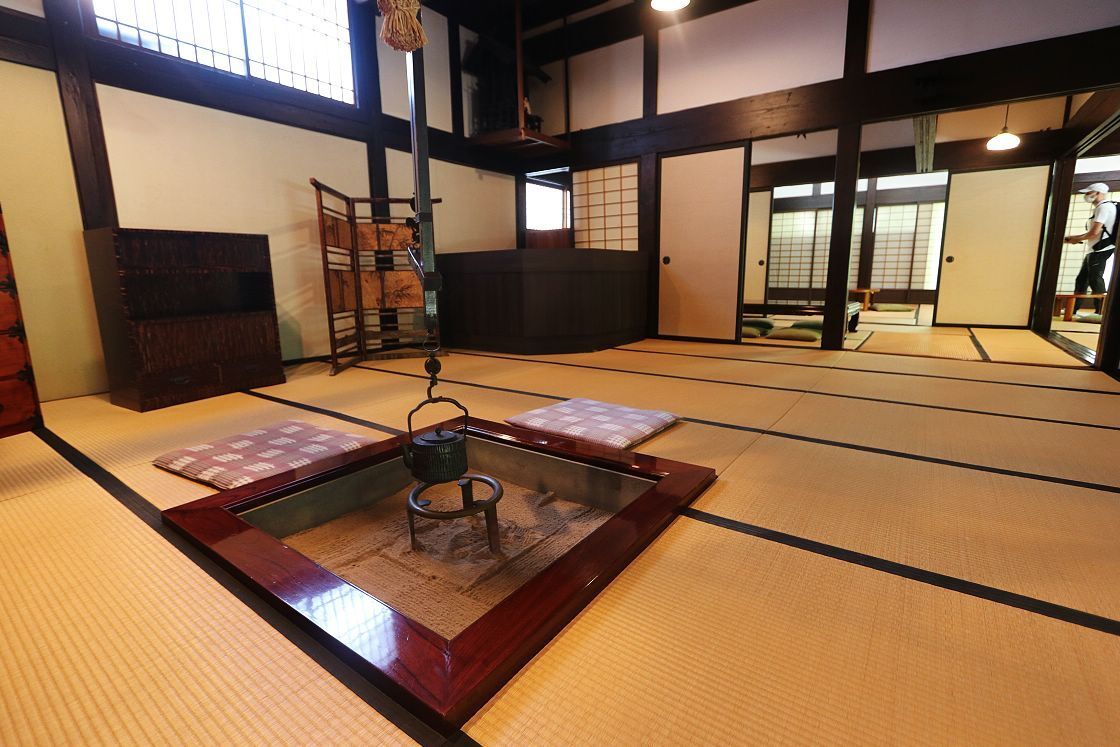
We would soon be hitting the road once more for our very last two spots of my Akita adventure, but still we managed to squeeze in a quick stop for lunch before saying goodbye to Kakunodate. Located a short walk from the samurai district towards the center of town, Inaho Shokudo is a simple but cozy restaurant with a very specific mission - elevating the humble pickle to something resembling art, in a style it calls Gakko Kaiseki.
The timing couldn't have been better - while pickles have never been among my favorite Japanese foods, they had certainly been growing on me in the course of so many traditional meals over the last few days. As I began to work my way through a tray packed with wonderfully neat and colorful tiny pickled bites, I discovered an entirely unforeseen taste for cauliflower pickled with cumin, while forever affirming my love of iburi gakko, or smoked and pickled radish, especially when, as here, delicately made into tempura.

With that, it was time to head west across the prefectural border and into neighboring Iwate, from where I would be taking a shinkansen home from Morioka Station. But first, we would be saying goodbye to Akita with two final stops on the shore of Lake Tazawako.
Located just south of Towada-Hachimantai National Park, Lake Tazawako is a medium sized caldera lake with - at least in better weather - impressive views of Mount Akita-Komagatake and its own largely undeveloped shore, adding to a rustic and secluded feel. Despite being only Japan's 19th largest lake by surface area, it is also the deepest, reaching a maximum depth of 423 meters - a fact that can hardly hurt its unique place in the local imagination.
According to legend, there was once a beautiful young woman called Tatsuko who lived on its shores. Unable to accept that her looks could not endure forever, she prayed ceaselessly to Okura Kannon, the deity of mercy, to save her from this fate.
Eventually, the goddess appeared to her, promising that if she drank the water that flowed from between two boulders on the lake's northern shore, she would indeed be spared the ravages of time. Tatsuko did just that, but was horrified when she began to change into a dragon, finally tumbling into the lake to spend eternity in its depths.
Fortunately, local folklore has it that she is at least not alone, as her husband - the dragon Hachirotaro who lives in the Oga Peninsula's Hachirogata Lagoon - comes to visit her in winter, leaving his own lake to freeze over while Lake Tazawako does not.
Today, Tatsuko's beauty has also been immortalized in the form of an elegantly understated statue close to the lake's western shore, raised by a simple plinth above the surface of the water so that she appears almost to float. I'm sure it looks even better in sunny weather, but it was still quite striking to see on this rainy and overcast day.
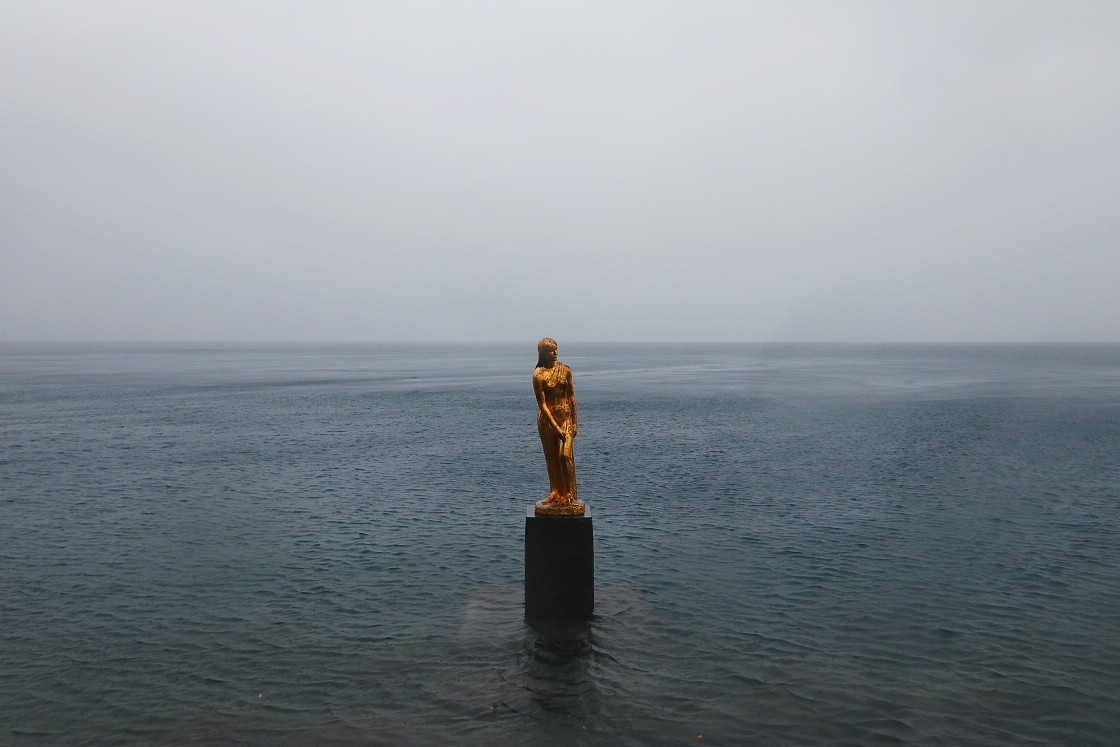
Located just 8 minutes drive around the lake on its northern shore, our final stop was at the Gozanoishi Shrine. Although dedicated to Tatsuko in her guise as guardian deity of the lake, it takes its name from an episode in the second lord of Akita's 1650 tour of the lake, when he is said to have sat on a rock by the shore shaped like a woven rush mat, or goza.
Down by the shoreline, an especially nice view across the lake is crowned by a tall torii gate, reminiscent of the more famous one on the shore of Lake Ashinoko in Hakone. By now the rain had picked up almost unbearably, but I couldn't resist enjoying the scenery for another moment before finally turning home.
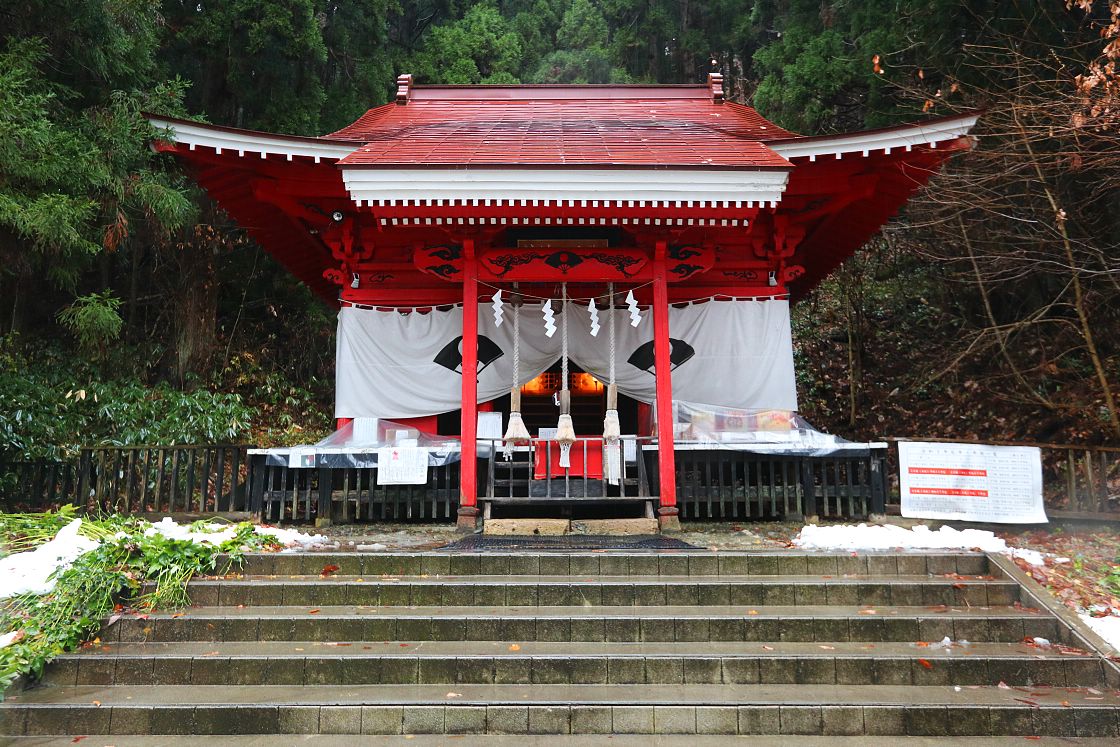
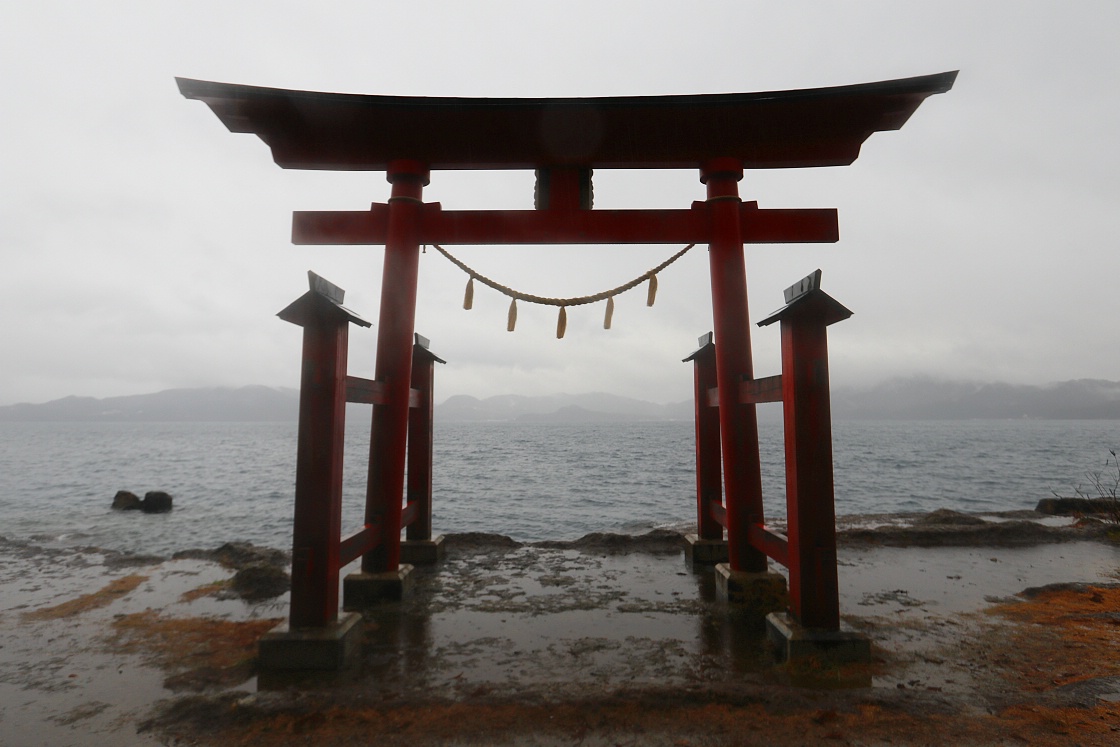
Access
Akita is directly connected by the Akita Shinkansen with Tokyo. The one way journey takes 3-4 hours and costs around 17,000 yen. Alternatively, Akita Airport offers scheduled flights to Tokyo (HND), Osaka (ITM), Nagoya (NGO), Sapporo (CTS, OKD) and Taipei (TPE).

